Last view of the ocean for a while. Goodbye, Puerto Rico. See you again soon, mi isla encanta!
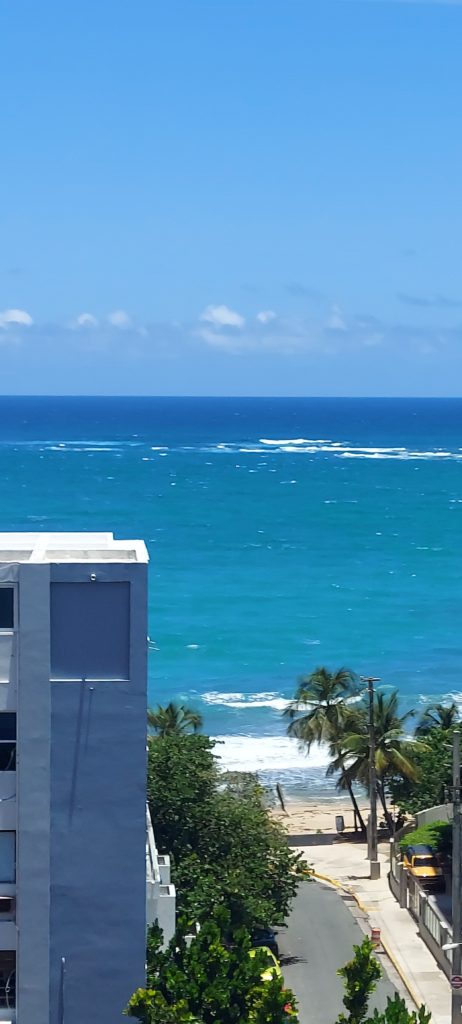
Last view of the ocean for a while. Goodbye, Puerto Rico. See you again soon, mi isla encanta!

We took a tour of Hacienda Muñoz in San Lorenzo, half an hour up the mountains from San Juan. Its coffee has won the Best Coffee People’s Choice Award at the Puerto Rico Coffee and Chocolate Expo for three years running. Is it really that good?
The tour focused on the coffee-growing industry and its history, as well as the methods used to grow, process, and roast coffee. The detail was sometimes excruciating, as we stood on the hillside in the hot sun listening to our impassioned guide go on and on and on.
While small, it’s a much larger operation than Hacienda Iluminada, the small hacienda we toured last fall which focused its tour on sustainable practices and integration into the forest. Here, we saw neat rows of coffee plants planted in full sun. In addition to its coffee fields, Hacienda Muñoz operates a small café, where we enjoyed fresh turkey sandwiches on baguettes, and a larger restaurant.
Lisa bought a bag of medium-roast coffee, and it was indeed exemplary.
The cost for the tour was $20, or $10 for kids and those over 60. It included a tasting.
Join us for a tour of Puerto Rico’s first agricola (farmer) rum estate distillery!
San Juan Artisan Distillers (Destilería San Juan) in Vega Alta is the only rum factory in Puerto Rico that makes its rum from sugar cane plants, inspired by the island’s tradition. Most rum distillers import molasses from other countries. But at this plant just half an hour west of San Juan, we got to walk through sugar cane fields, visit the barrel room, see the distillation tanks, learn what experimental flavors are brewing in the lab, watch staff label the bottles, and of course taste the various flavors of rum!
A family-owned company that launched in 2011, San Juan Artisan Distillers produce handcrafted ron caña (sugar cane rum) of exceptional quality infused with local tropical fruit, natural flavors and spices. The distillery makes six fruit-infused rums under the brand Tresclavos—Ginger Spice, Sweet Piña, Passion Parcha, Rumba Mango, Coco Loco, and Bili Quenepa—as well as an award-winning signature rum called Ron Pepón.
It’s the only rum distiller on the island that can offer a tour of the rum process from the sugar can plant all the way to your lips!
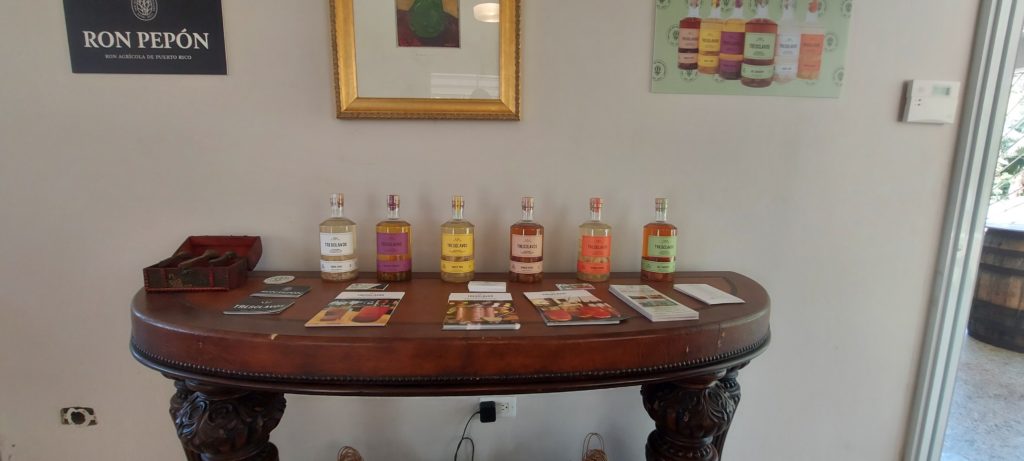
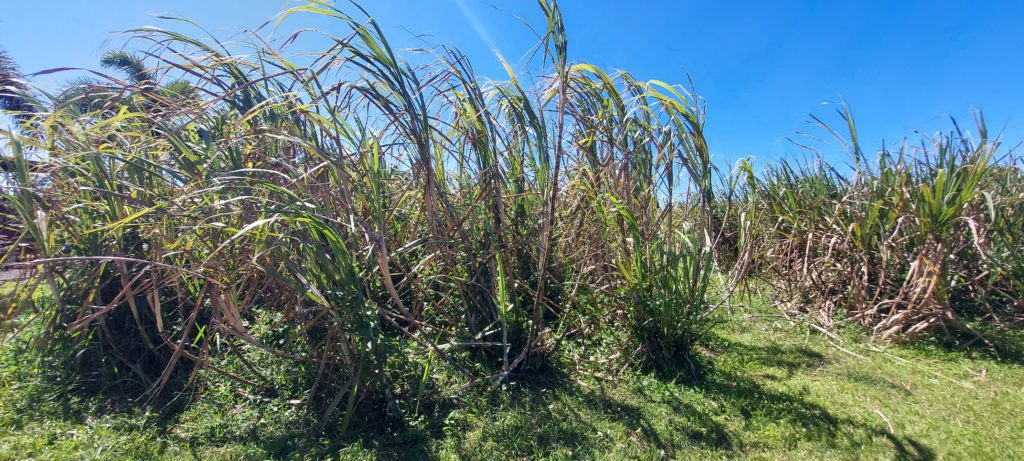
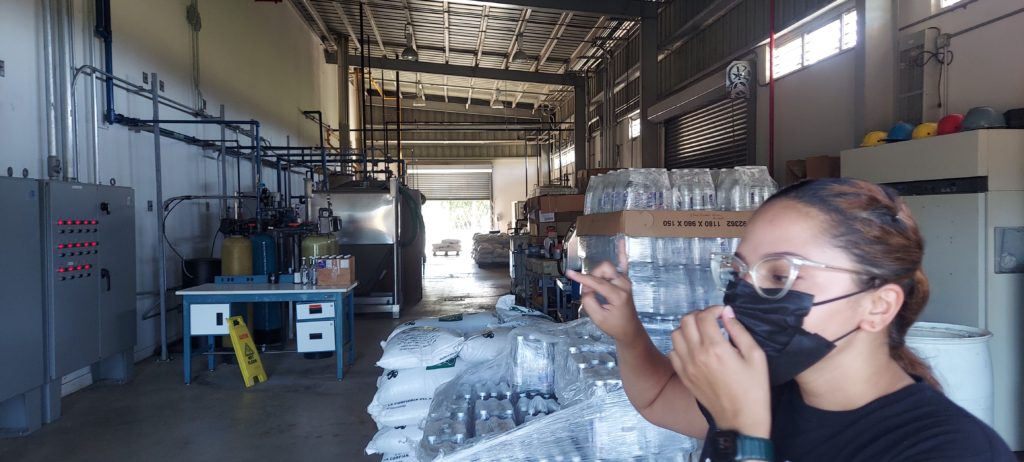
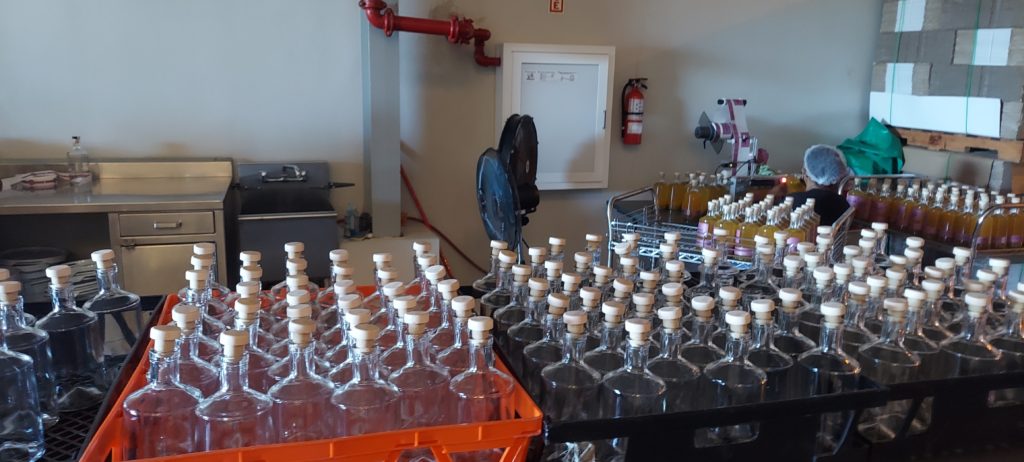
Thank you, Monica, for the informative — and delicious! — tour.
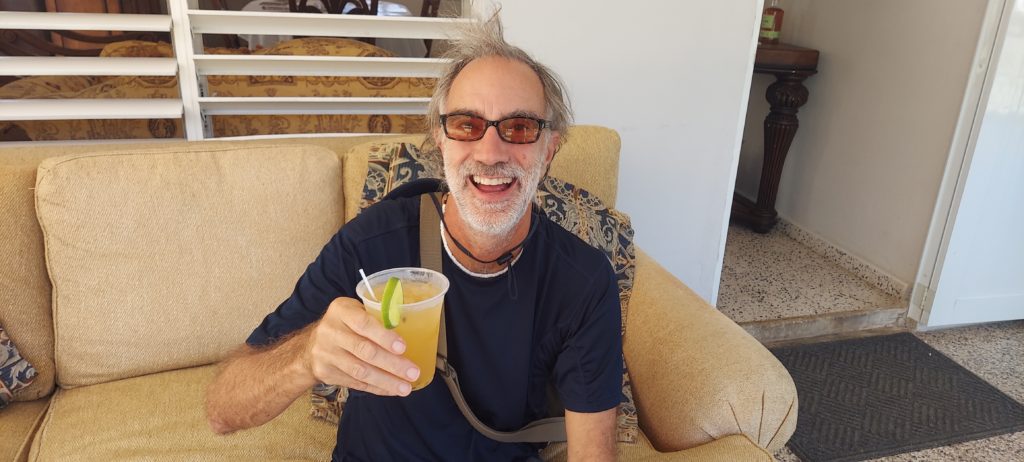
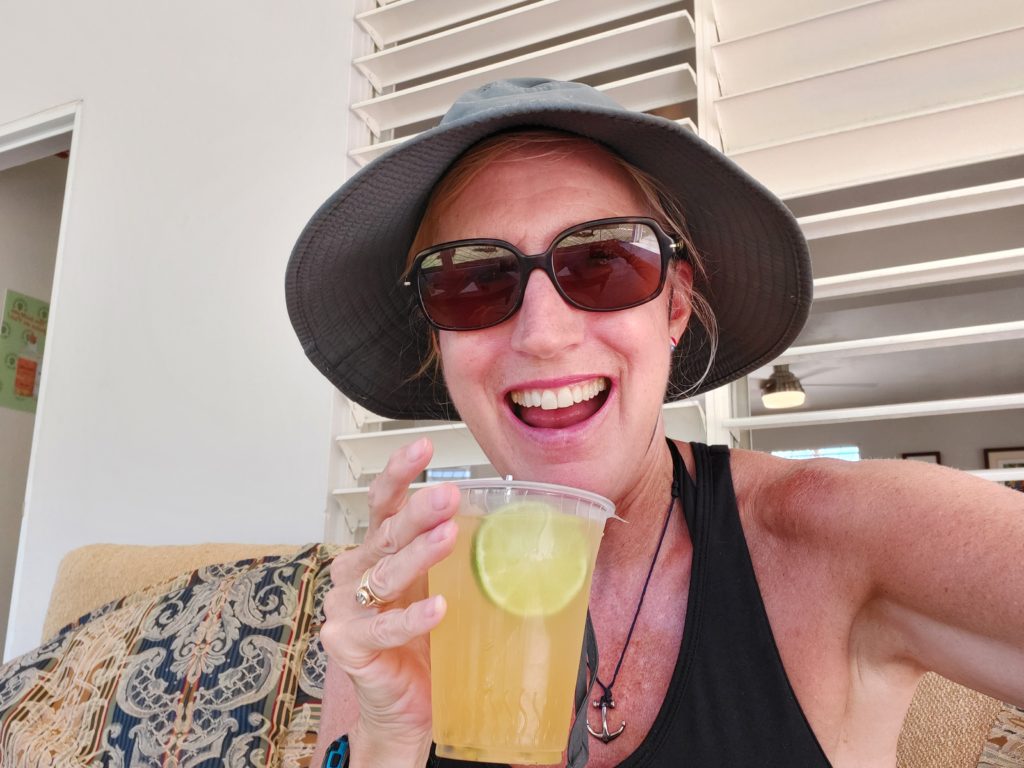
When we took a Thames River Cruise from London to Greenwich last fall to see the Royal Meridien, we discovered the National Maritime Museum, one of a quartet of the Royal Museums in Greenwich. The others are the Royal Observatory Greenwich, where the Meridien resides, and two others that will have to wait till next time: the historic ship Cutty Sark and the Queen’s House.
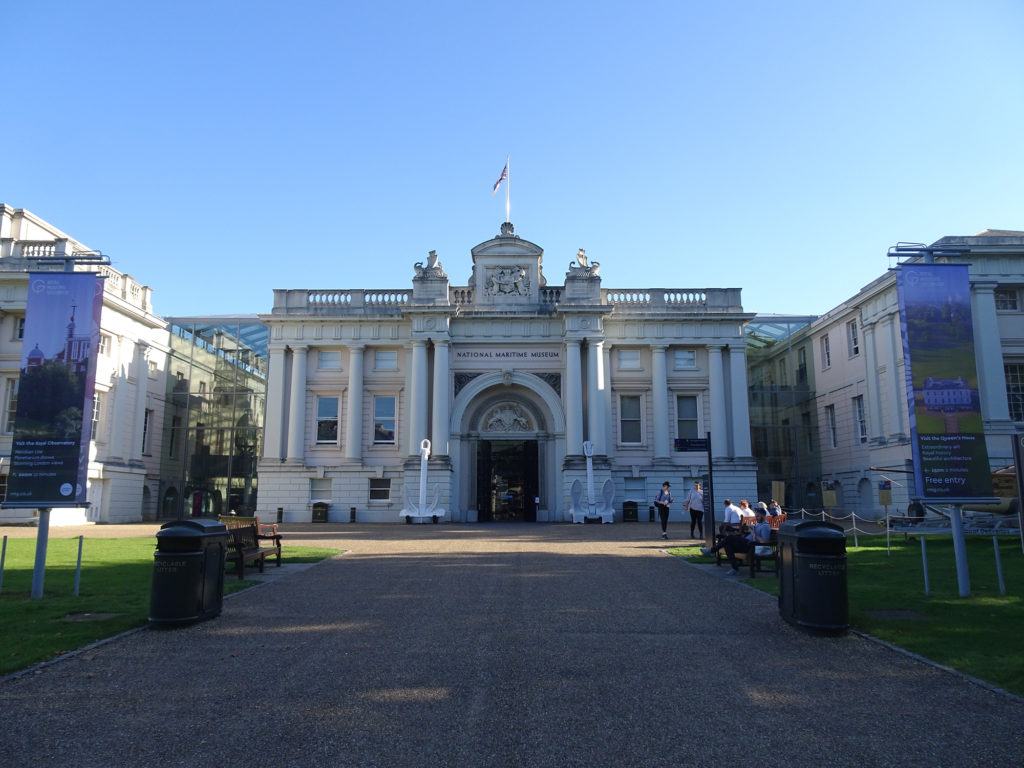
The National Maritime Museum takes you on an exploration of British naval history and Imperial arrogance, with a ship simulator, nautical oddities, and interactive games. We loved the giant message in a bottle and the colorful exhibit of ship figureheads. Admission was free.
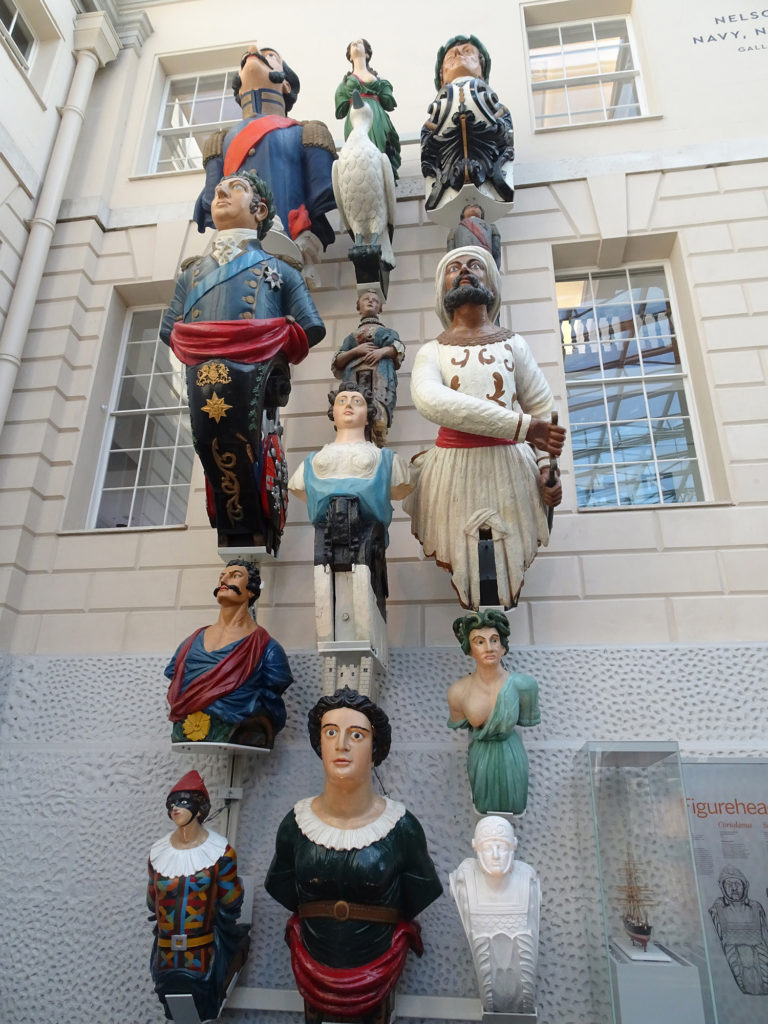
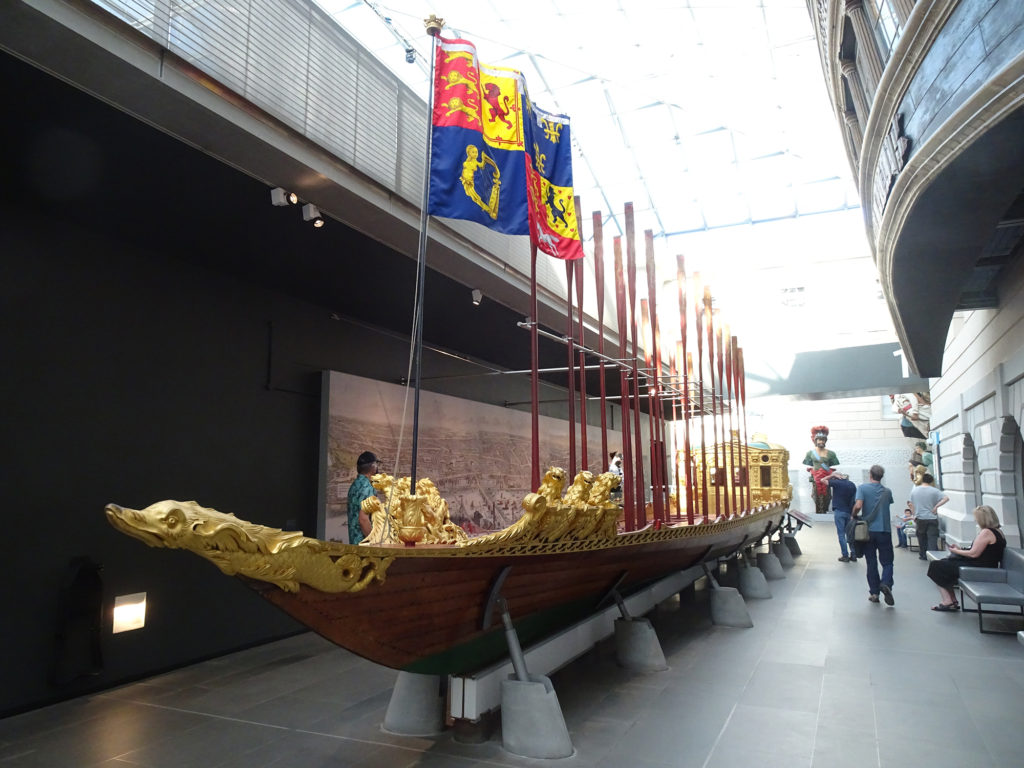
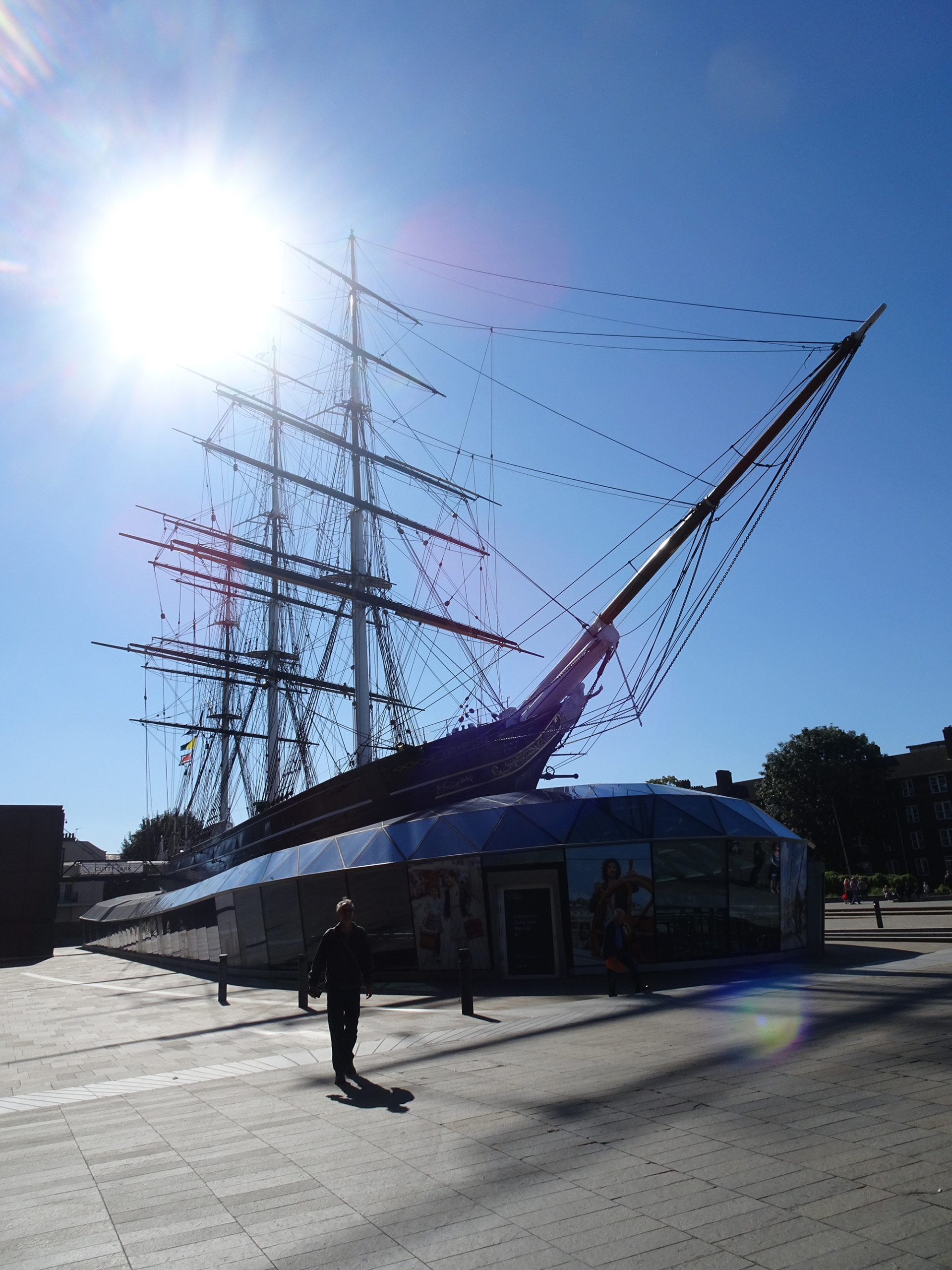
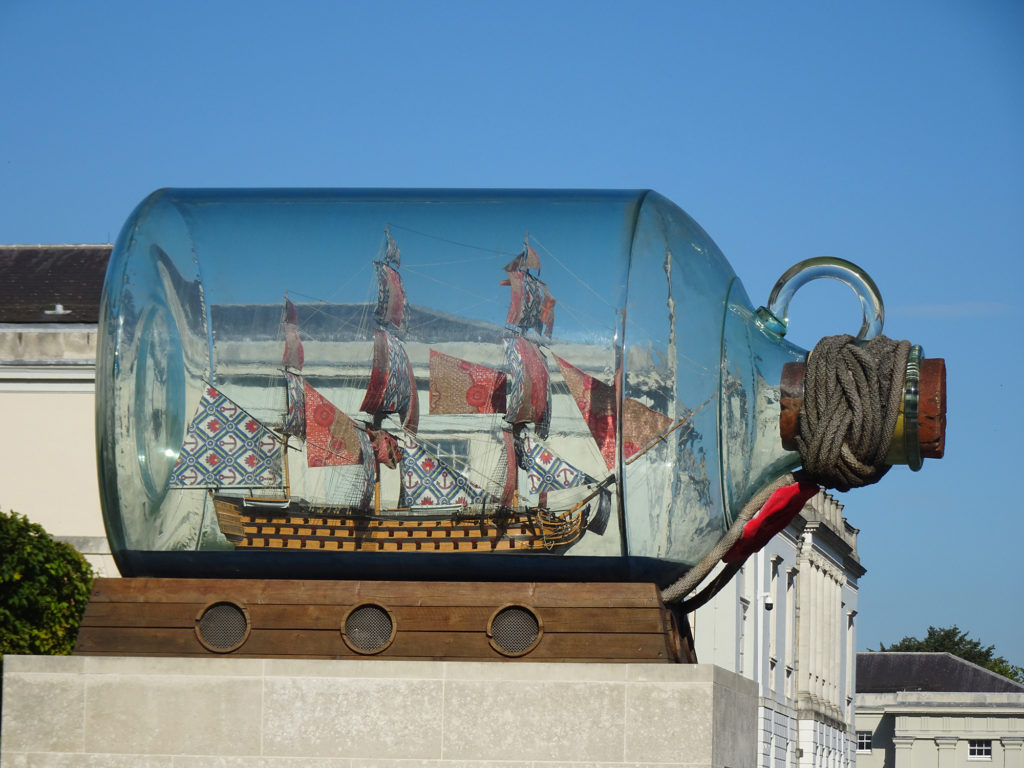
What a fun discovery! Greenwich deserves more than a day.
Enjoy the video!
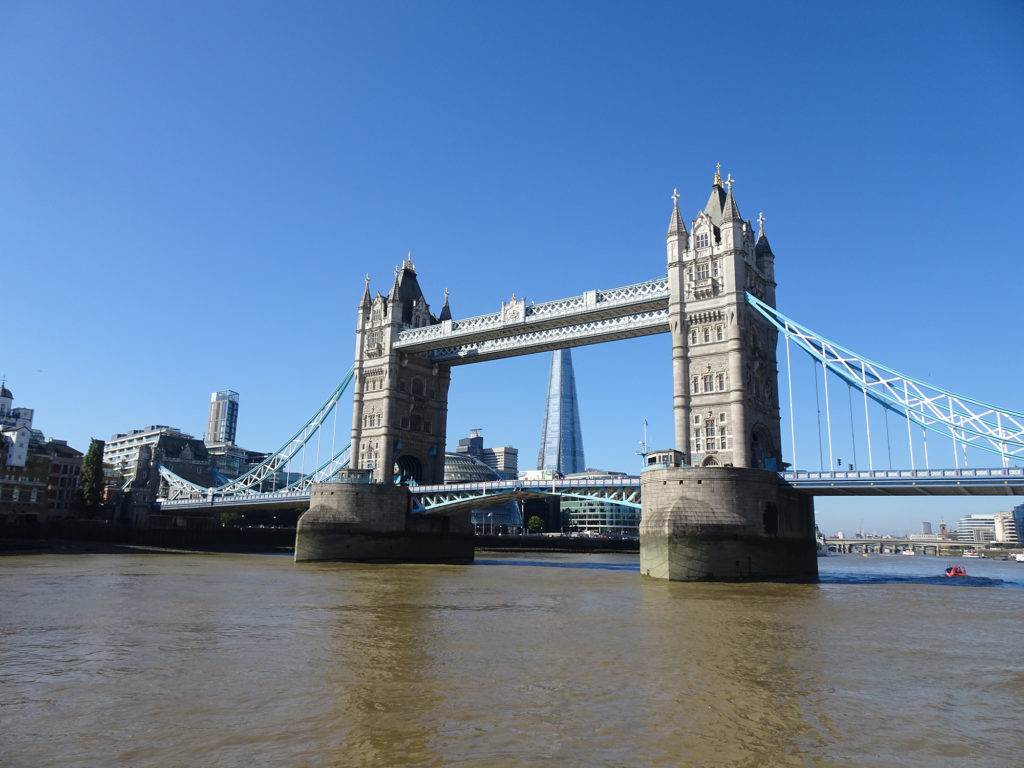
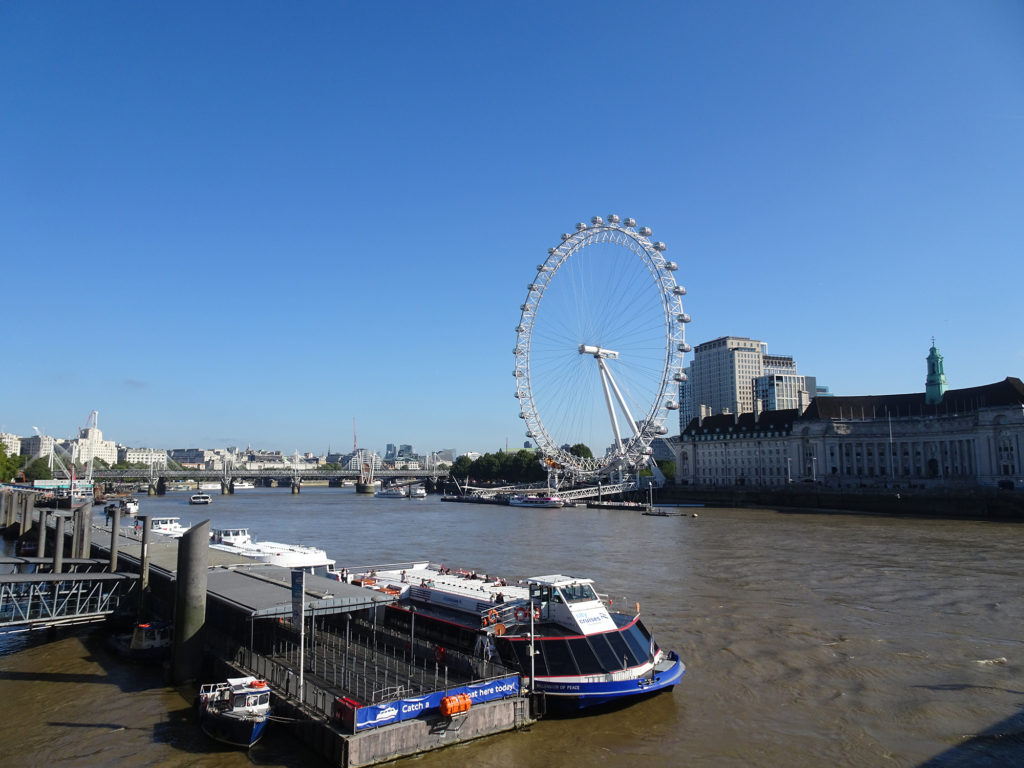
Info:
Our family visited Arecibo Observatory to see the 1,000-foot radio-telescope constructed in a sinkhole in the karst region of western Puerto Rico during a vacation in April 2008. The radio-telescope and its visitors center offered a fascinating exploration of space for my two science-minded kids. Naturally, they don’t remember it all today. But Bob and I do! That’s why, when we heard that the colossal radio-telescope had collapsed last year, we booked tickets as soon as the facility reopened to see how it looks now.
Here are some photos from our 2008 visit with our kids, Aryk and Gavin, who were 10 and 7.
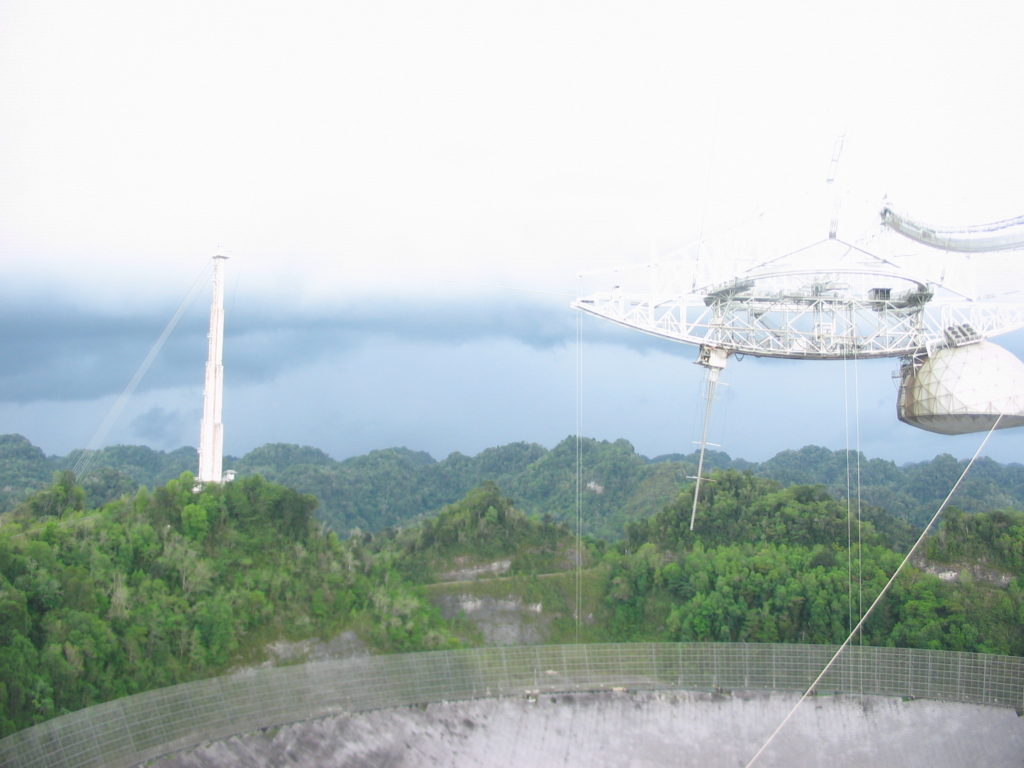
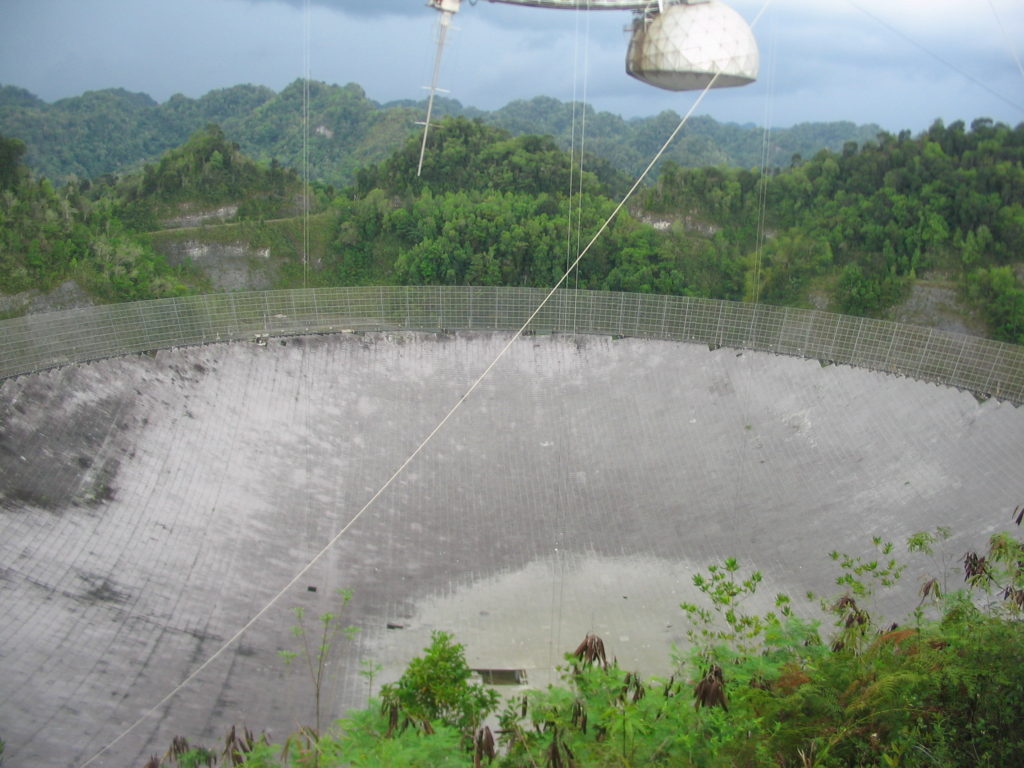
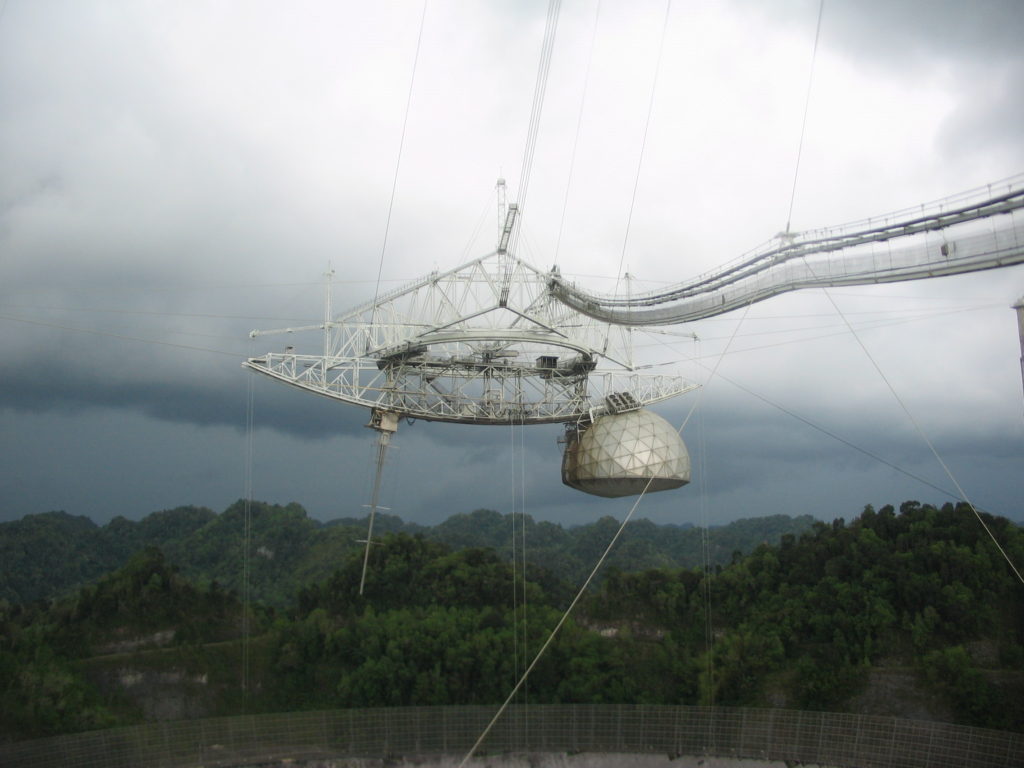
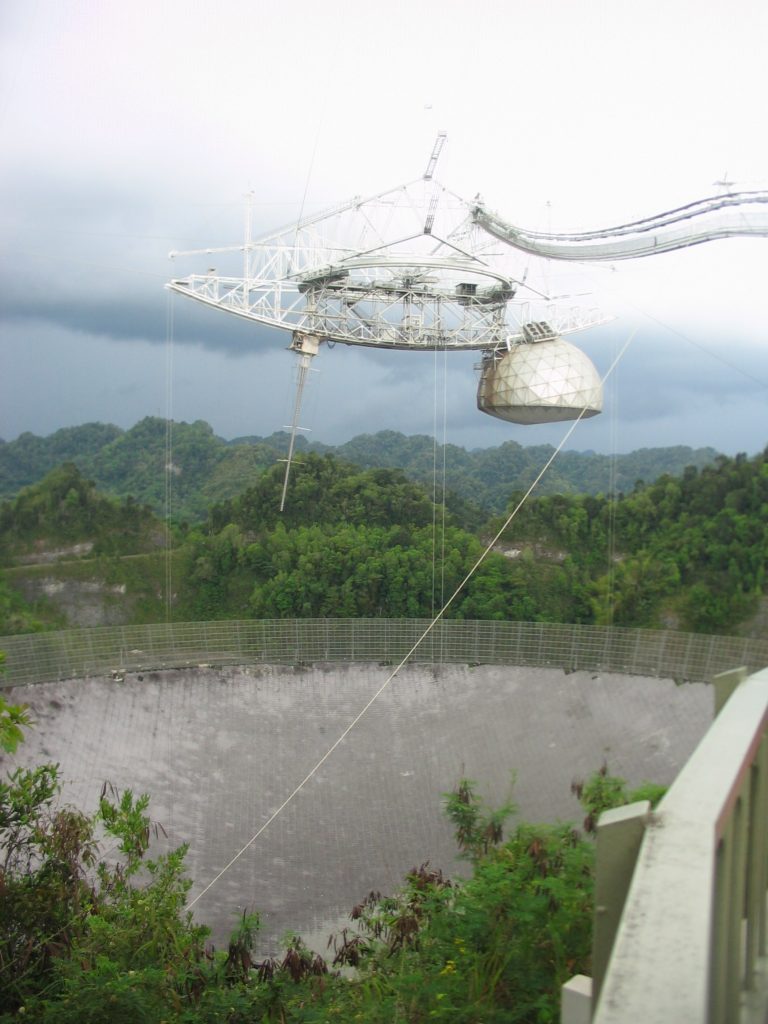
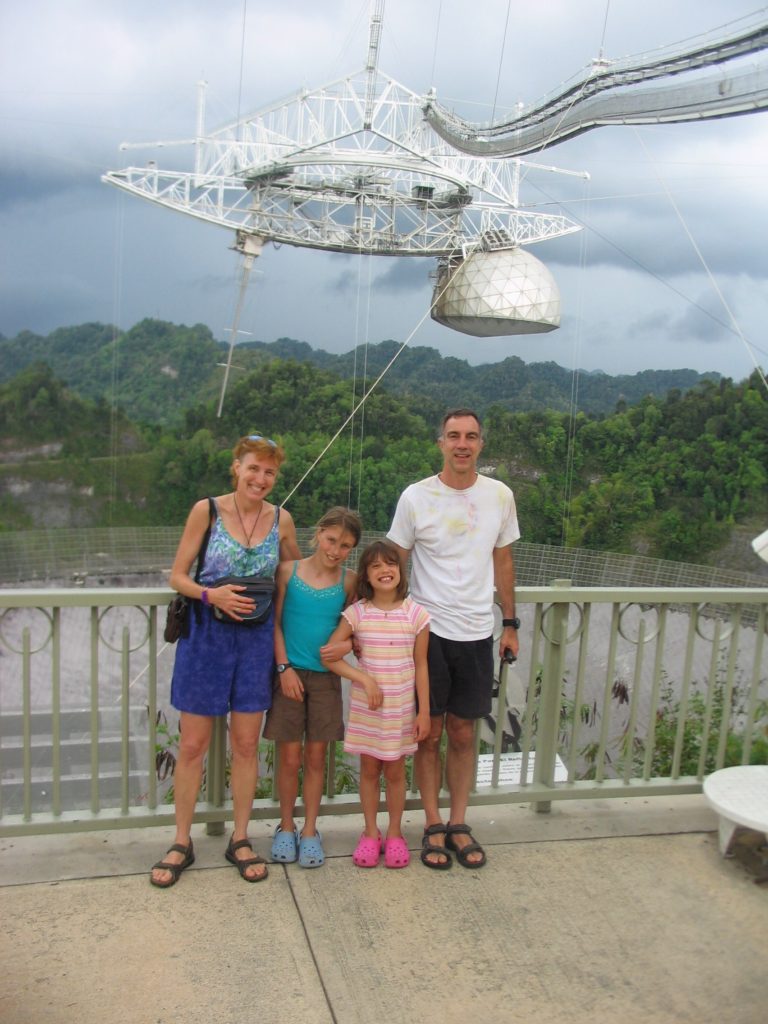
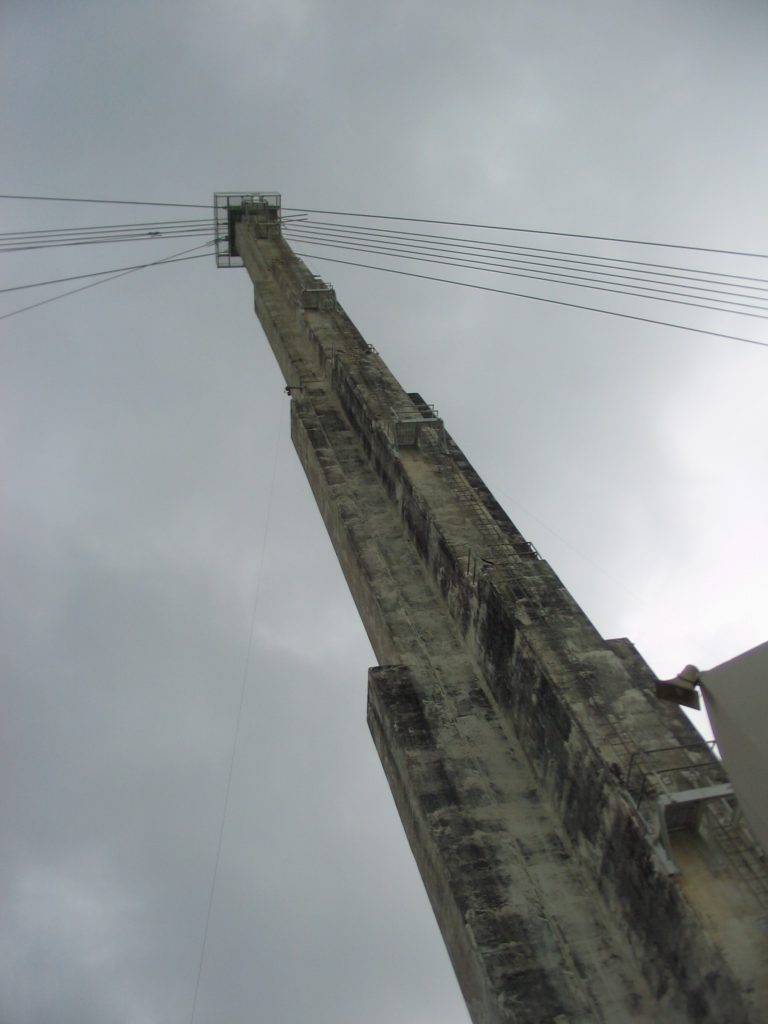
And here is what it looks like, almost exactly 14 years later.
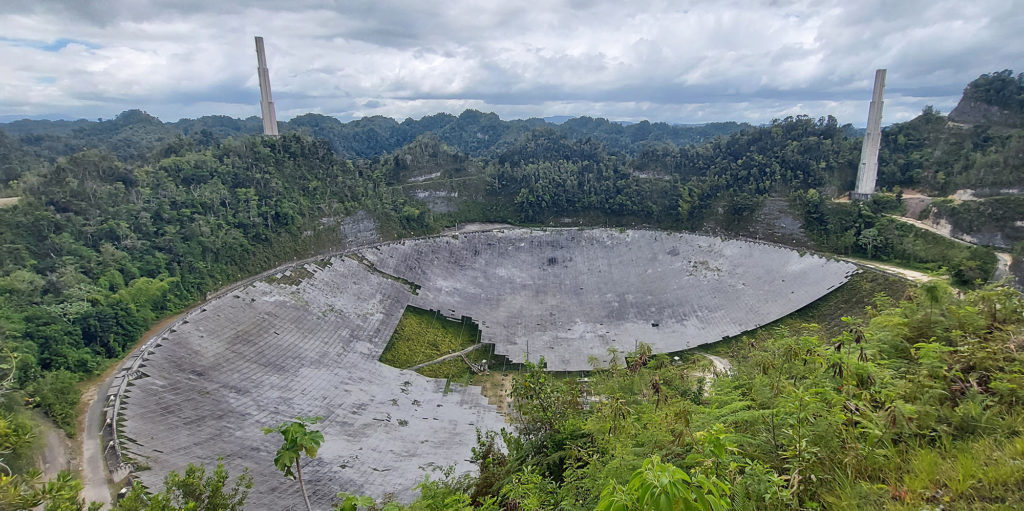
The first three cables snapped in November 2019, and the rest a month later. A couple of years earlier, Puerto Rico experienced a number of earthquakes, which may have compromised the structure’s integrity. But there really is no definitive answer as to why it collapsed.
The Arecibo facility has asked the National Science Foundation for funds to build back better, but has received no answer.
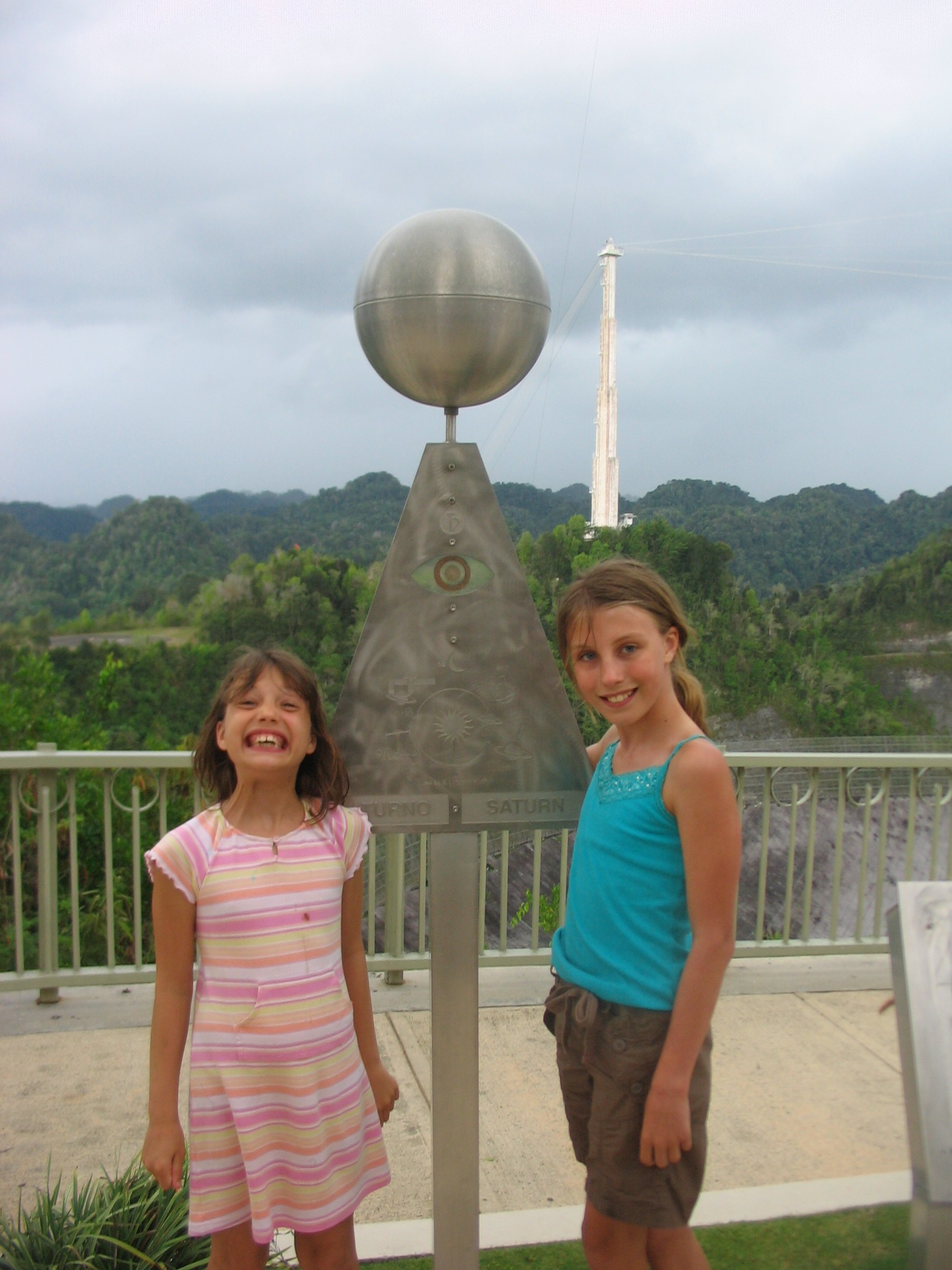
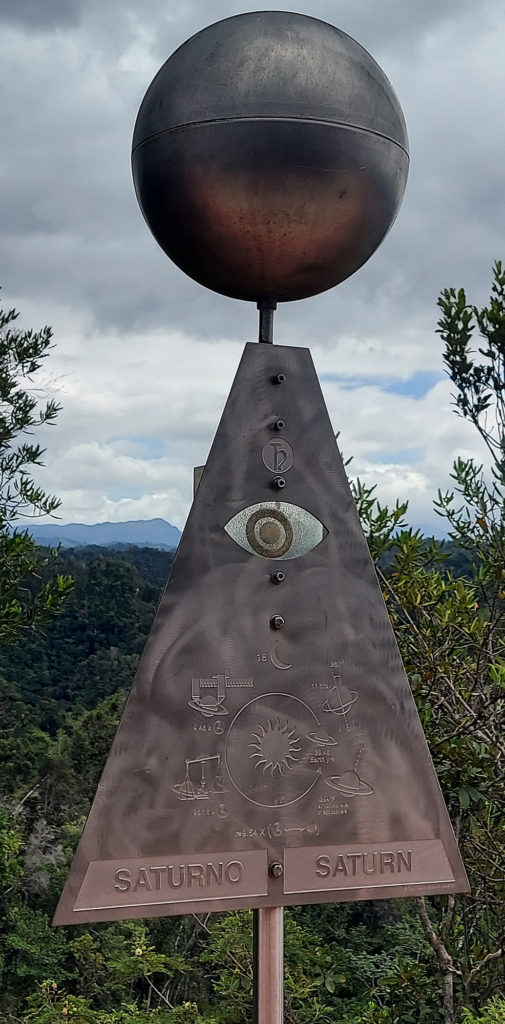
Watch a spectacular YouTube video of the crash here.
Despite the collapse of the giant radio-telescope, scientists continue their work at the Arecibo Observatory (AO) to study the huge amount of data collected over 50 years. It is still recognized as a world-leading radio astronomy, solar system radar, and atmospheric physics facility. It contributes highly relevant data to support discovery, innovation, and the advancement of science for the well-being of humankind.
The state-of-the-art Science and Visitors Center holds a lively interactive museum where kids can watch a film, build a spaceship, play games, and see a model of the original telescope. It’s definitely worth the trip!
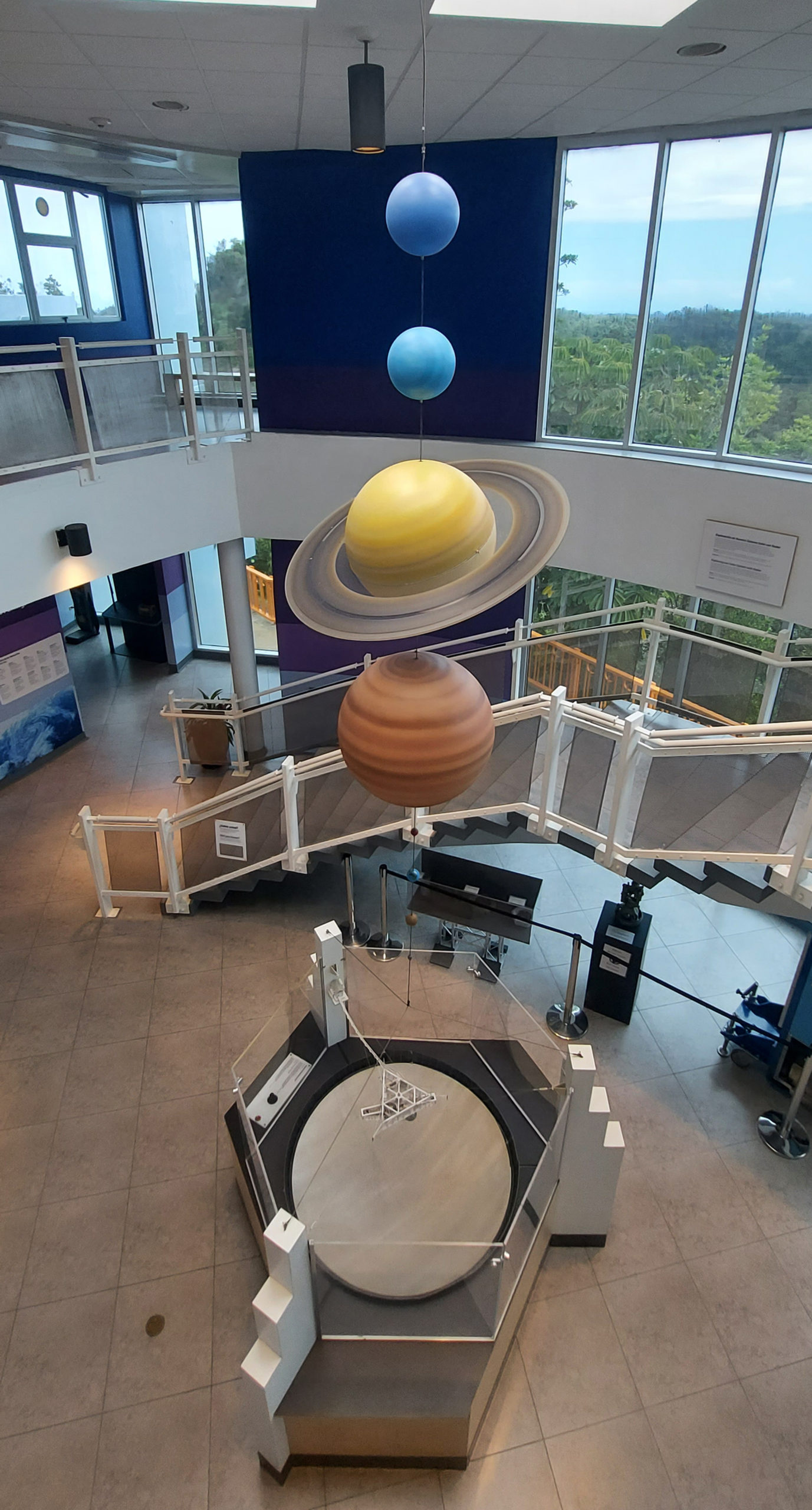
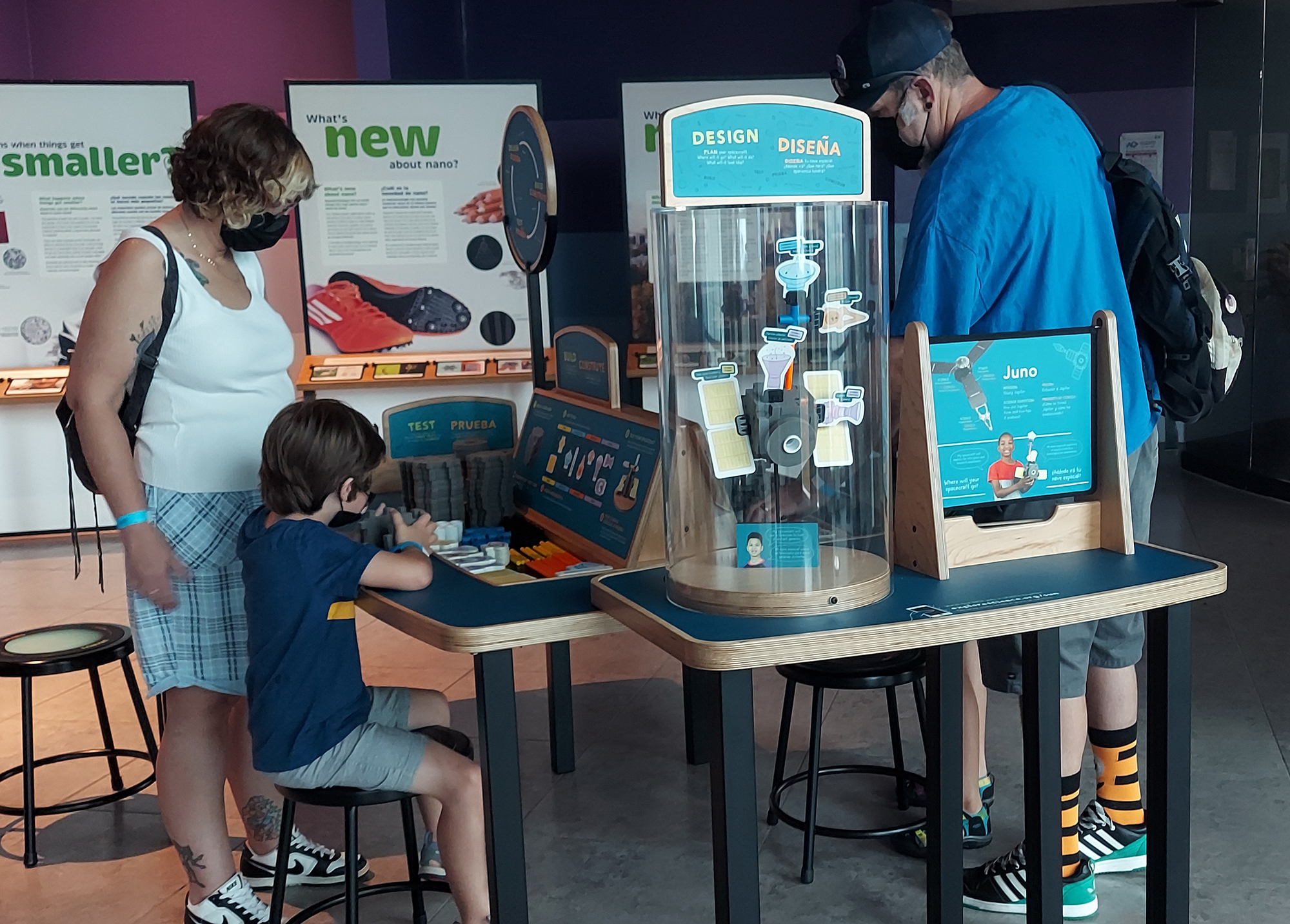
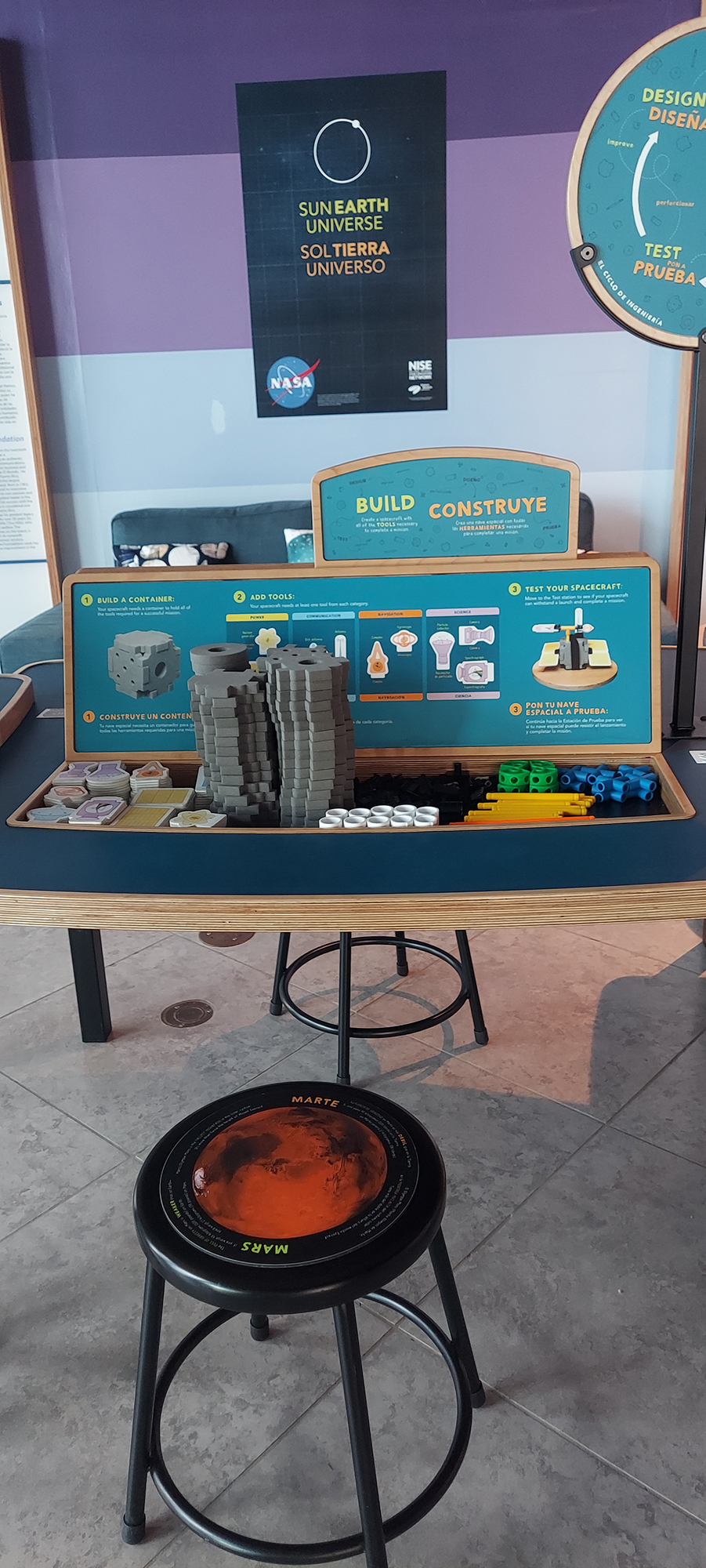
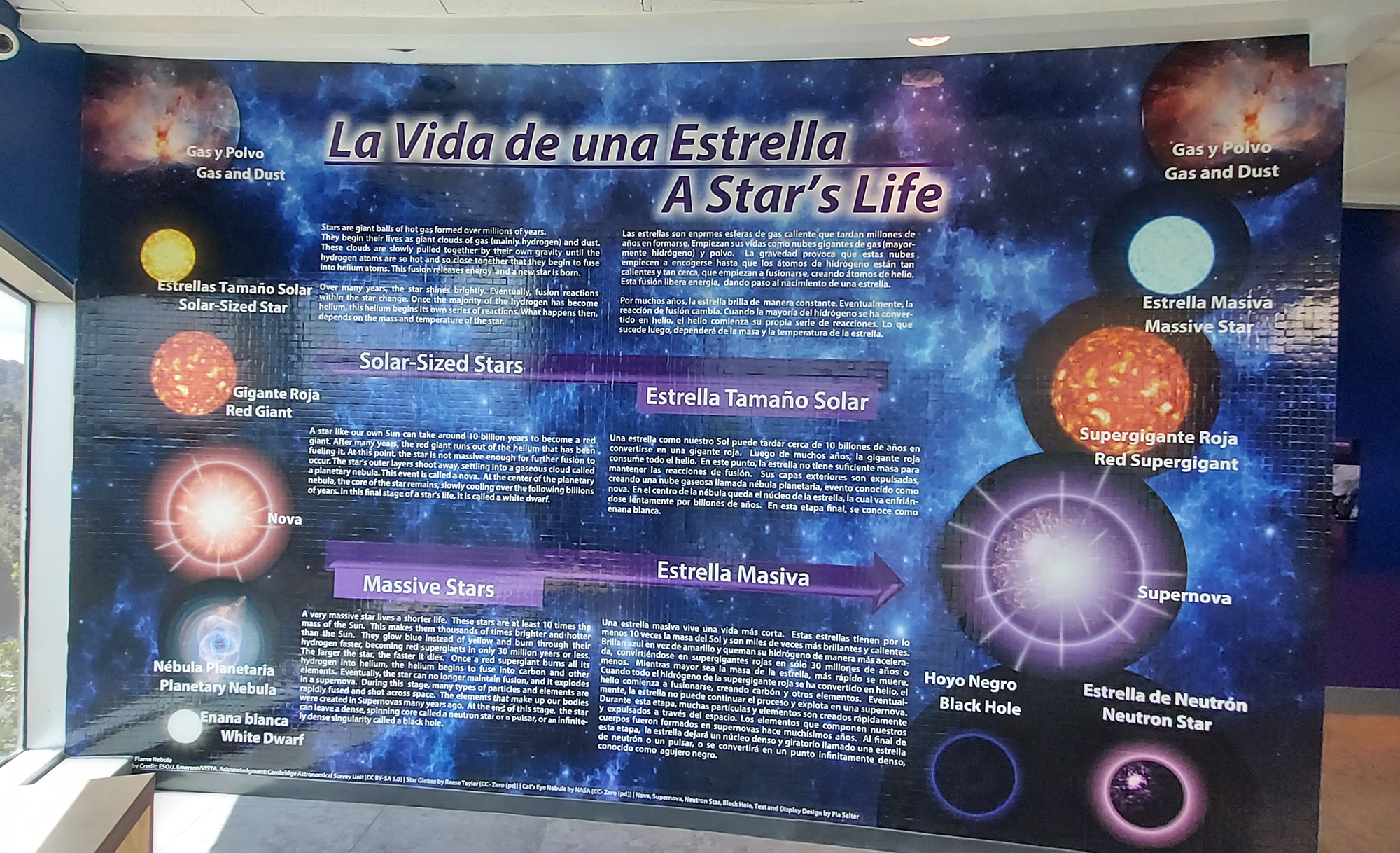
The Arecibo Observatory is a facility of the National Science Foundation operated under a cooperative agreement by the University of Central Florida.
Watch for Bob’s YouTube video, coming soon!
LINKS
As Messy Suitcase makes the rounds of rum distilleries across Puerto Rico, we discovered a new boutique one in Old San Juan and decided to pay a visit. Scryer Rum Barrelhouse & Rooftop is a small-batch, pot-distilled sipping rum distillery in a gorgeous historic building.
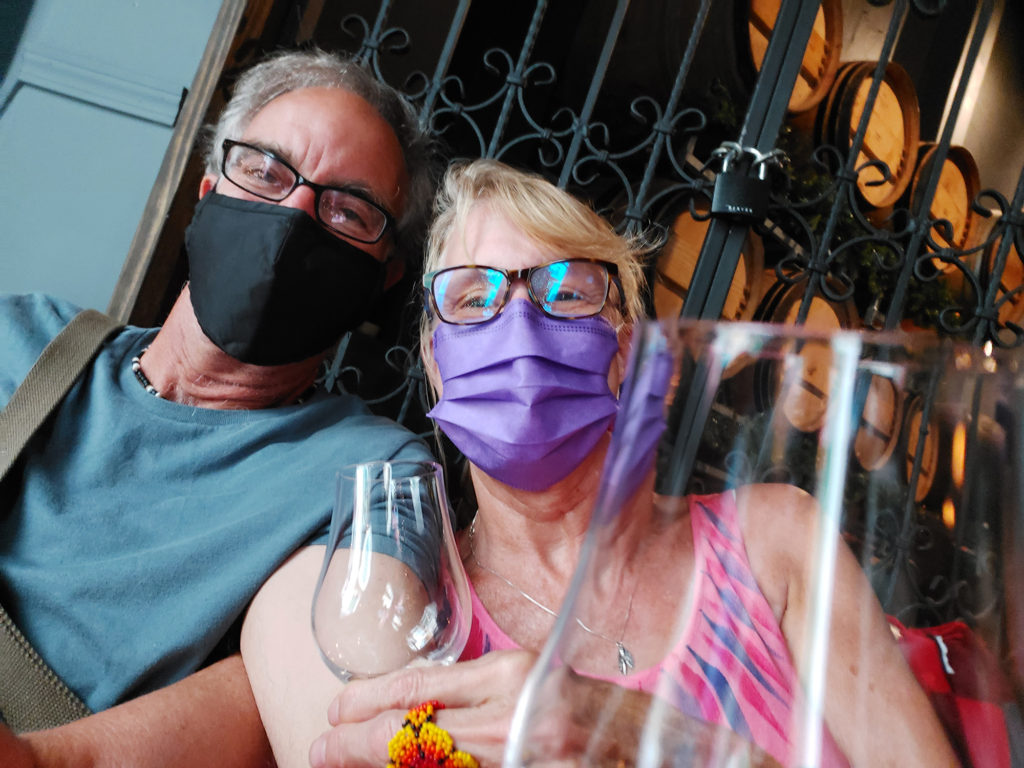
“Sipping” is industry-speak for expensive – the good stuff you drink on its own, as opposed to the cheap stuff you pour into a cocktail.
Scryer was founded by a couple of buddies shortly before the pandemic. Garrett, who led our tour, started his alcohol education in whiskey and brought that expertise to rum distilling. But while the partners have created a delicious sipping rum, a lovely bar and a delightful rooftop, they have a lot to learn about running a good tour! They missed out on a lot of opportunities. Find out why in this video.
(Sorry in advance for the loud music in the background – they conduct the tour right next to the noisy bar.)
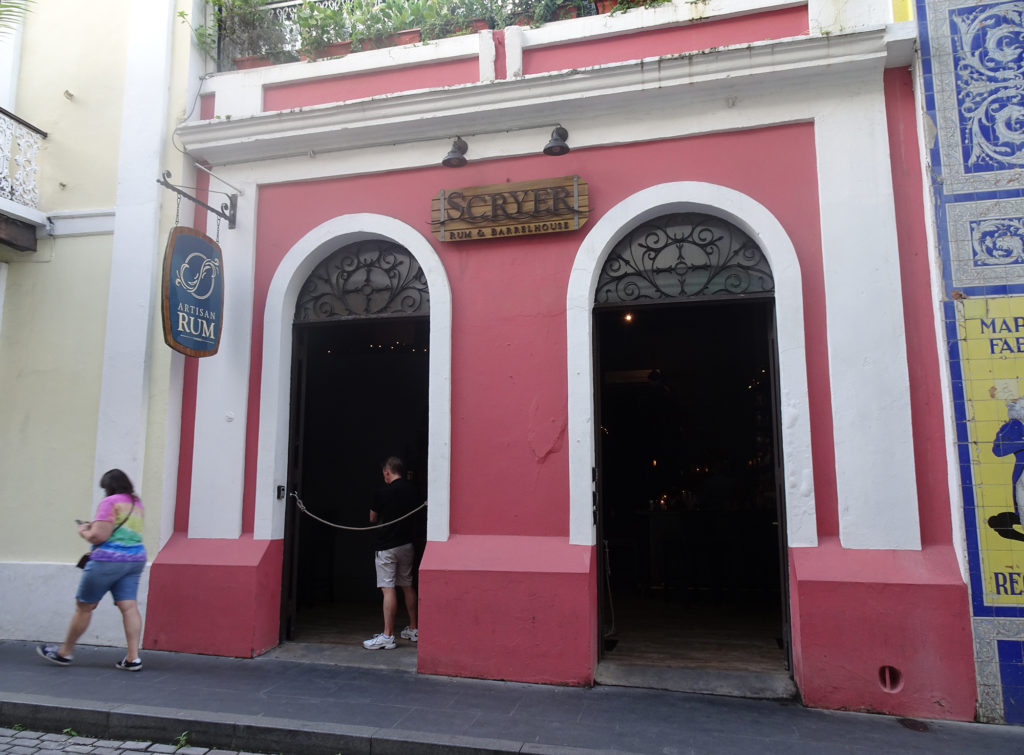
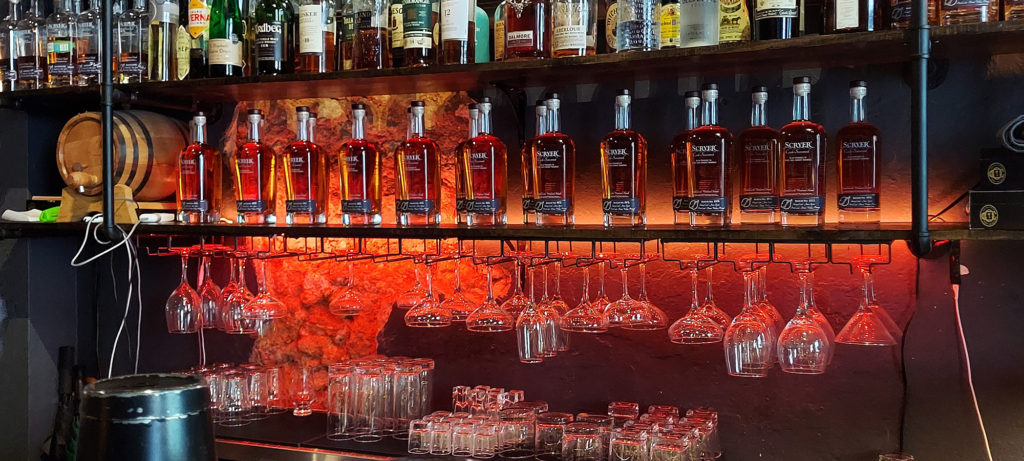
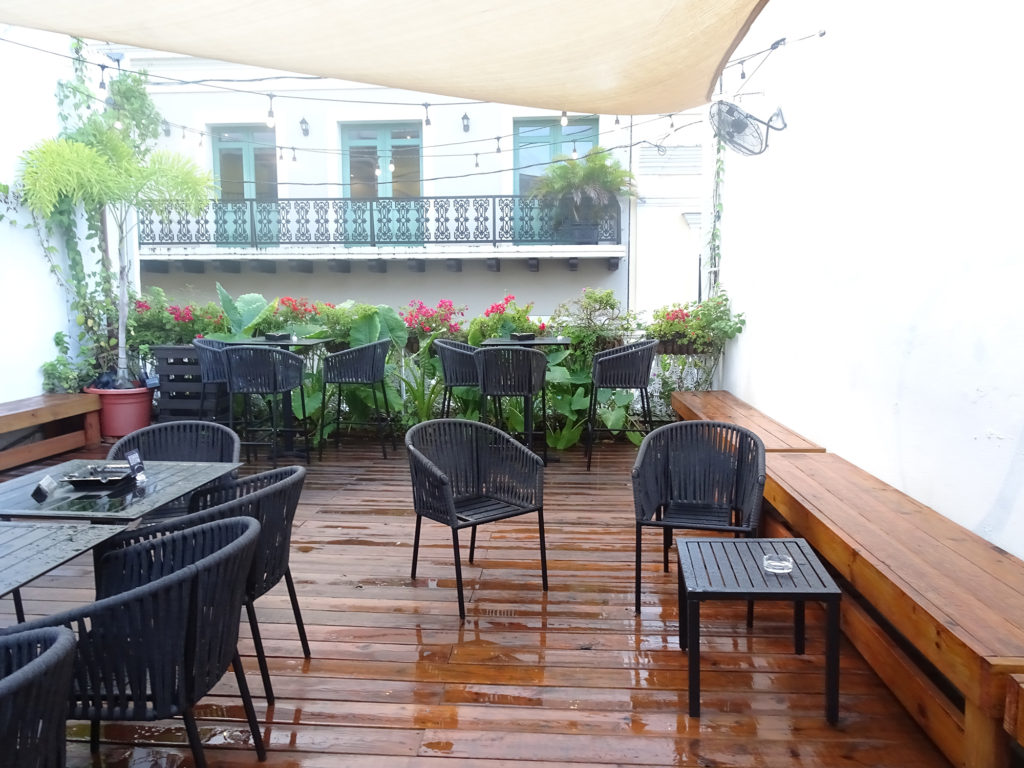
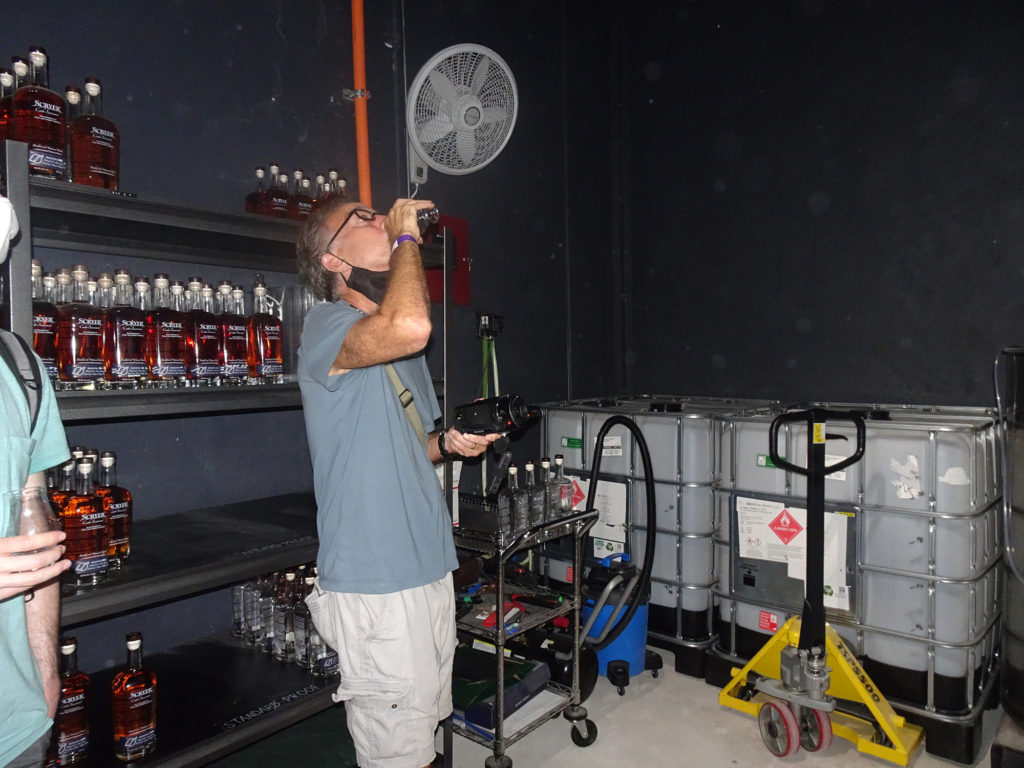
No visit to St. Croix is complete without a trip to its crown jewel of underwater glory: Buck Island.
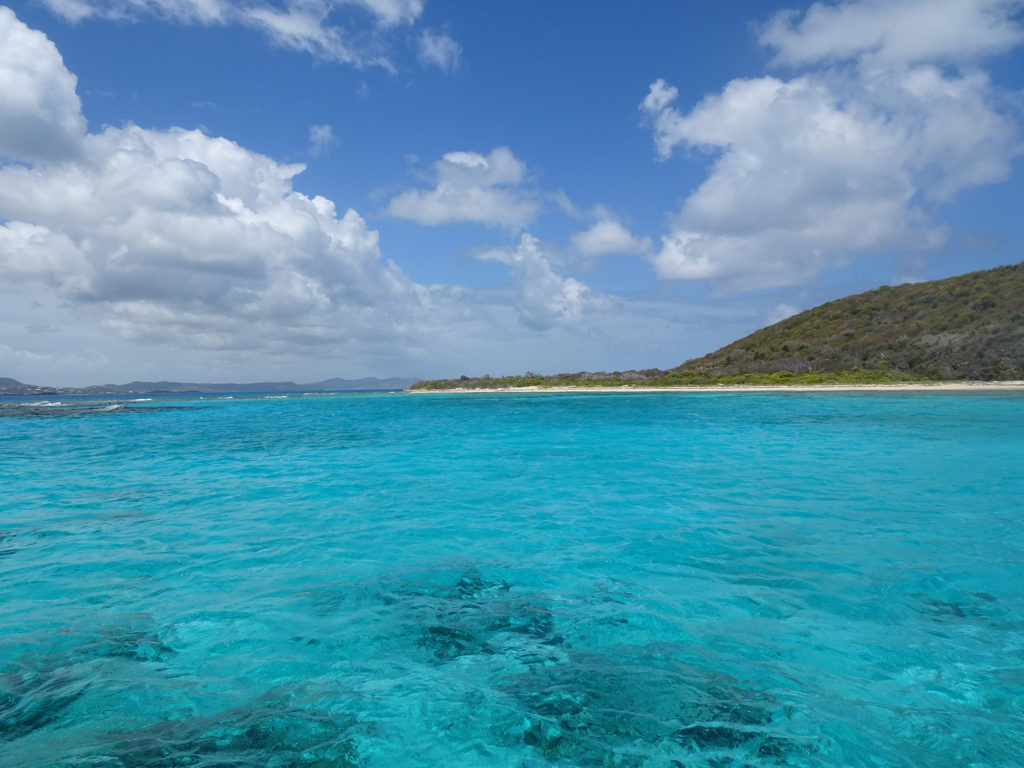
Located one and a half miles from the dock at Christiansted across the turquoise sea, Buck Island Reef National Monument offers over 19,000 acres of both submerged and dry lands that are pristine and perfect for nature exploration. The only way to get there is on a National Park Service-approved boat tour. We chose to take a half-day catamaran trip with Big Beard Adventures.
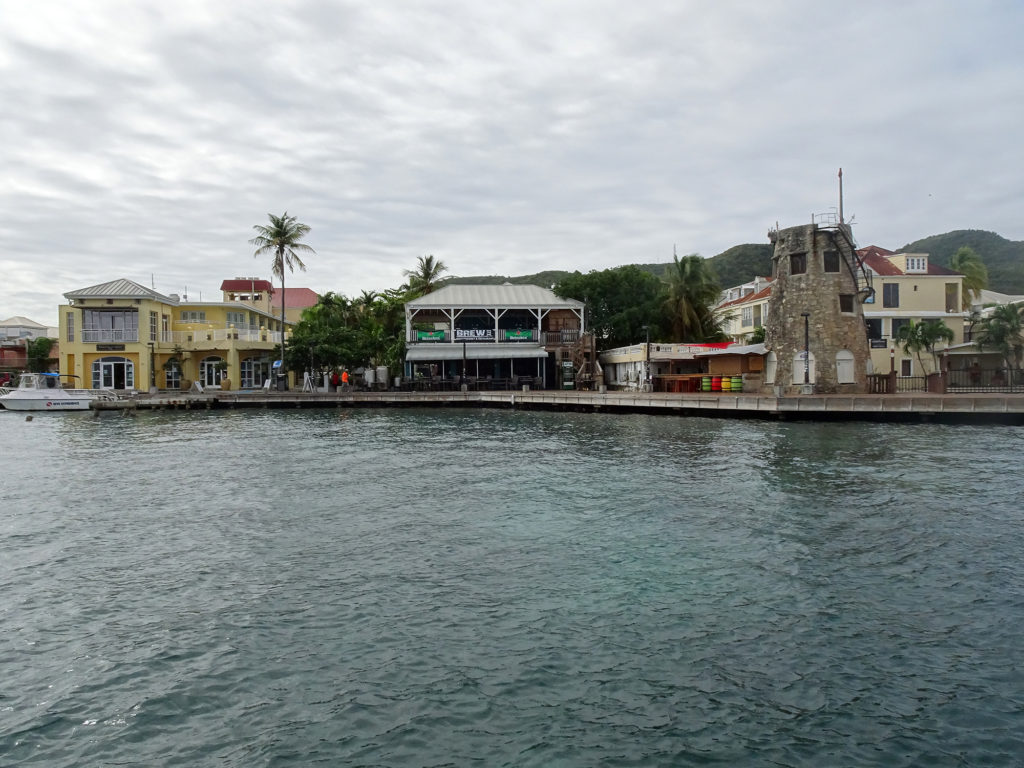
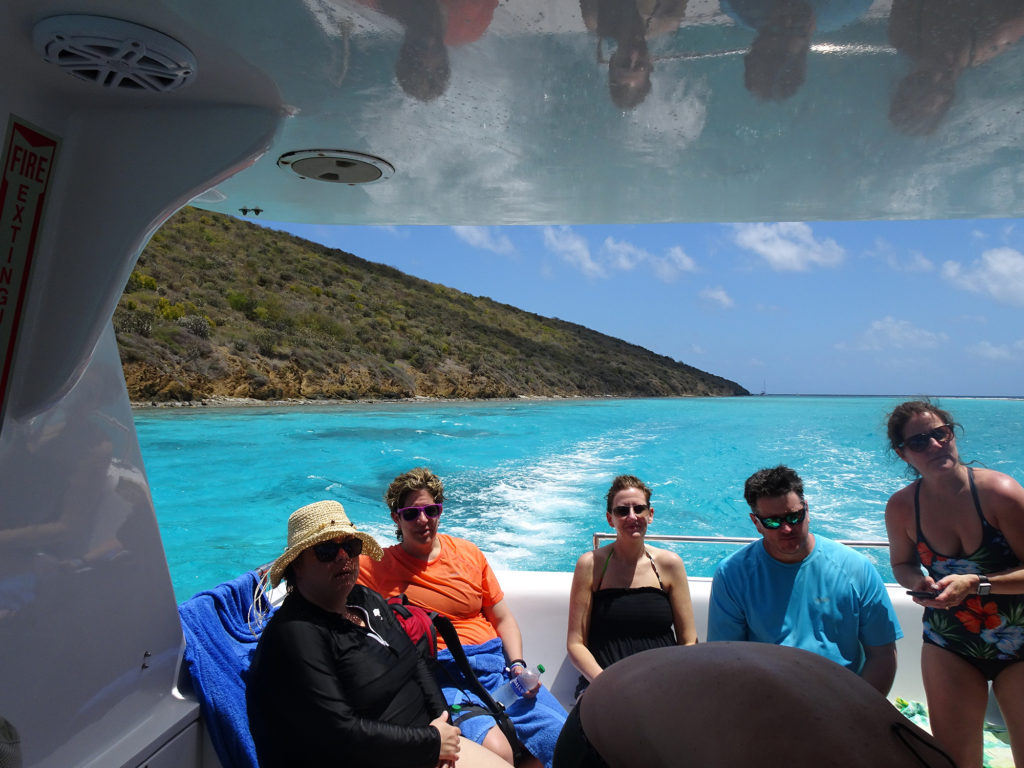
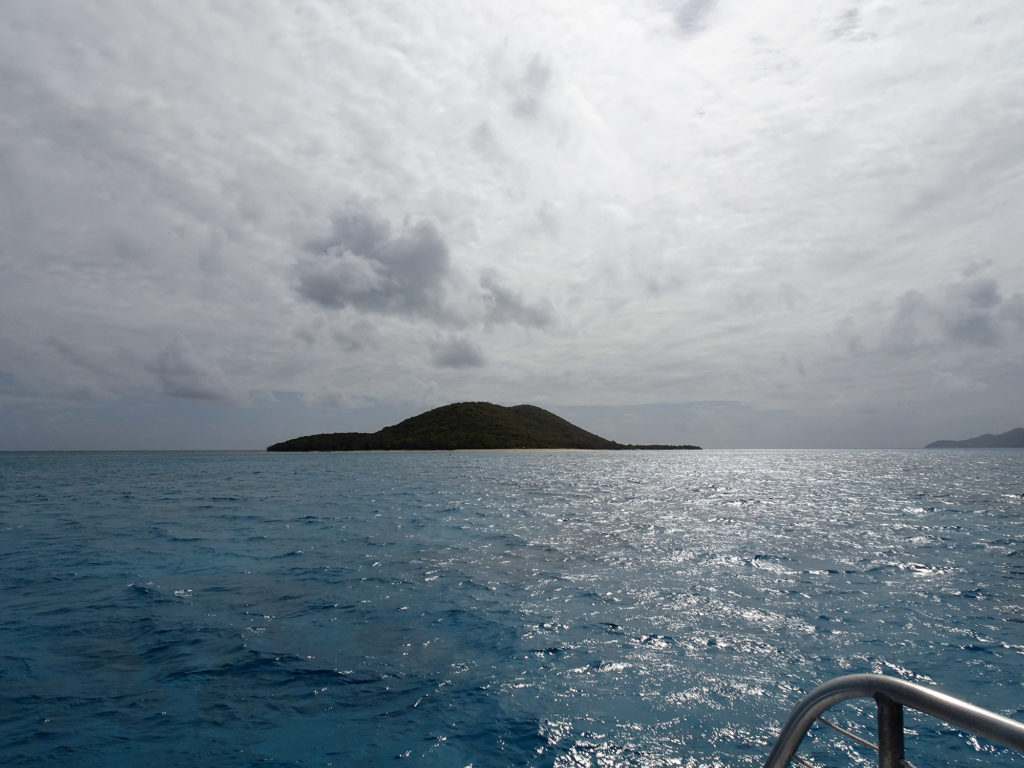
There are hiking trails on Buck Island will take you through a tropical dry forest to the hilltop; we didn’t have time to do this. (Take the full-day tour if you want to hike.)
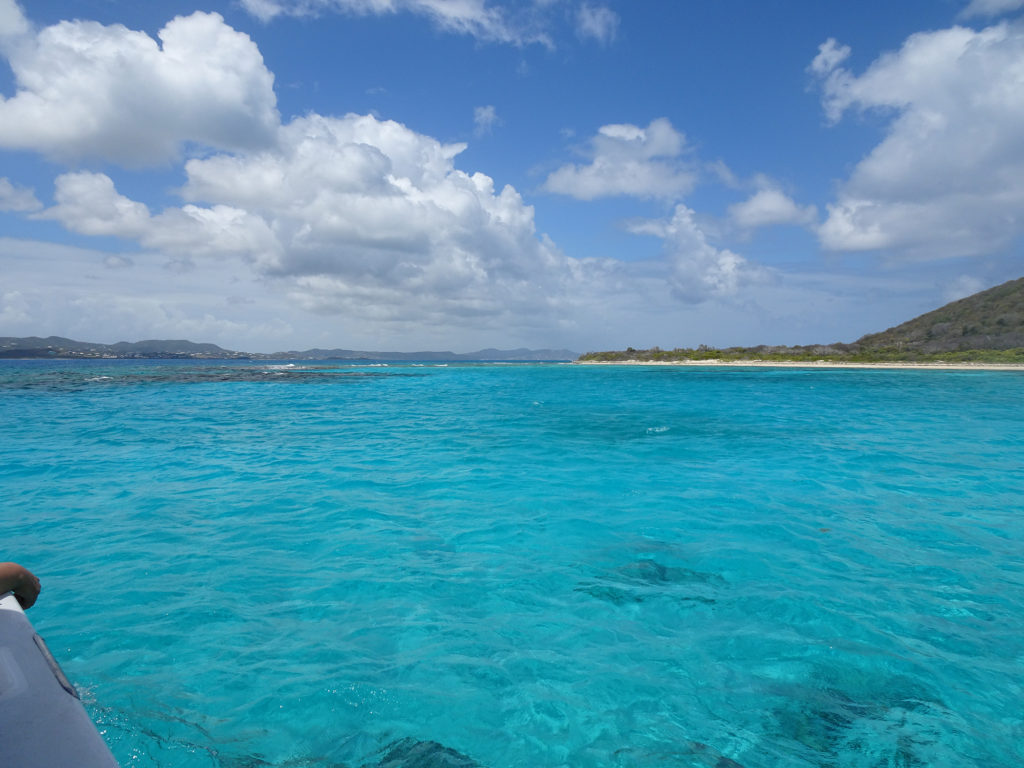
But we did have time to visit the beach, where we watched gray pelicans and magnificent frigatebirds fish while novices were back at the boat learning how to snorkel. Then the Big Beard crew honked the horn for us the re-board the catamaran, and took us around to the other side of the island.
We pulled on our masks and fins and jumped in with the first group and snorkeled for an hour and a half above an outstanding reef teeming with colorful fish and majestic elkhorn coral. Enjoy Bob’s YouTube video!
On the way back to Christiansted, we enjoyed punch made with St. Croix’s own Mutiny Vodka (we will visit their distillery on our next visit to the island) while visiting with our new friends, Jane and Rick from St. Louis! (Jane originally hails from Adelaide, Australia, and both are scuba divers.)
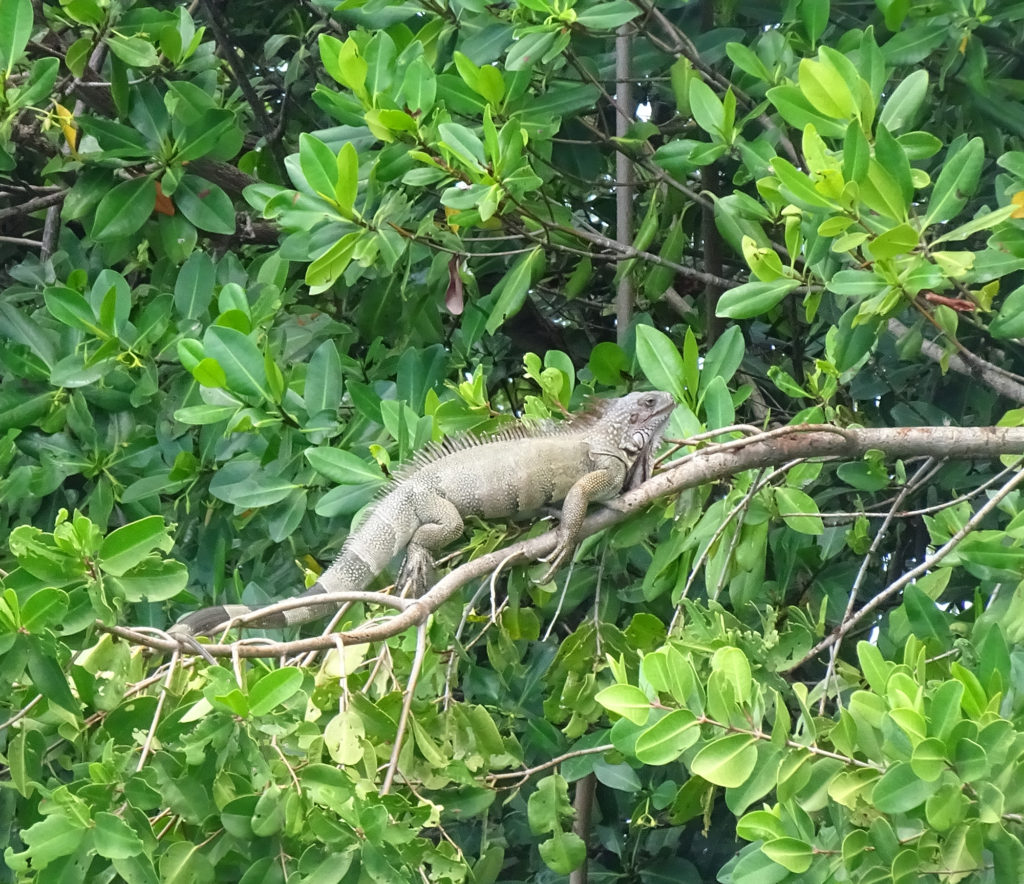
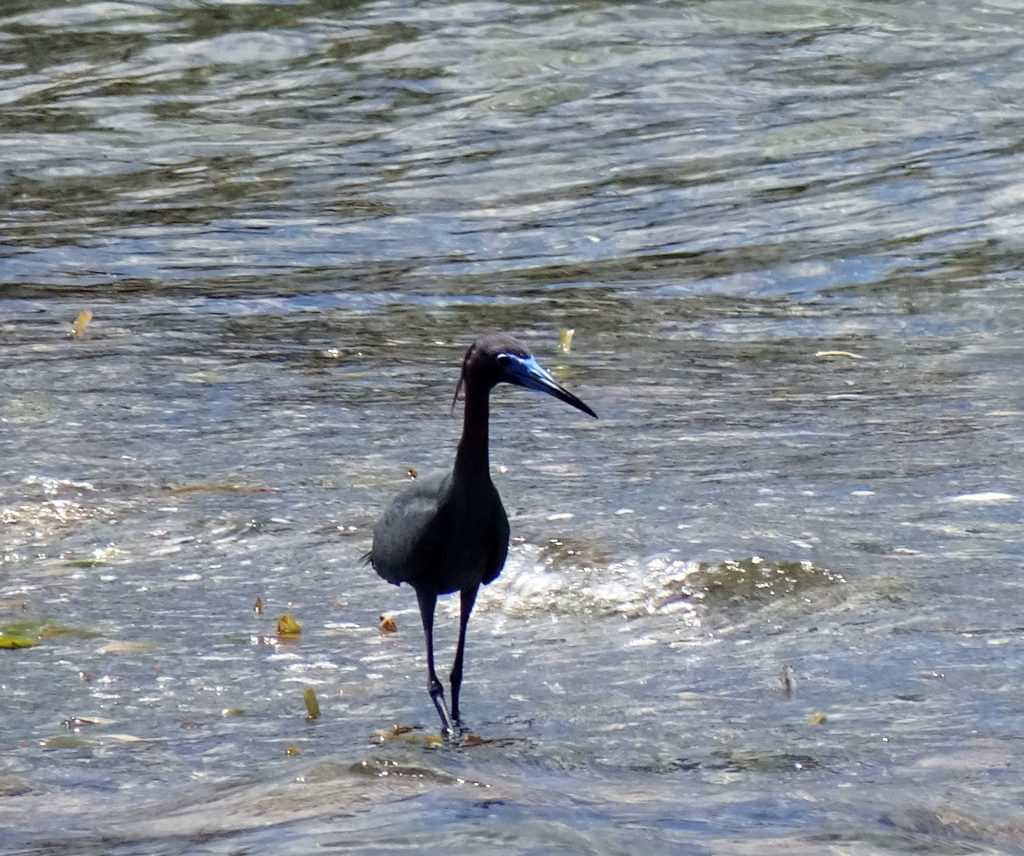
Messy Suitcase heartily recommends Big Beard’s Adventure Tours. Four thumbs up! The captain made the safety instructions hilarious; his crew did a great job of getting to know every participant’s needs and aspirations for the trip; and they were all extremely capable – and fun! (And yes, all the men did indeed sport big beards, though the new guy’s was still a bit scraggly.)
LINKS
This innocuous baggy contains the freshest coffee I will ever drink.
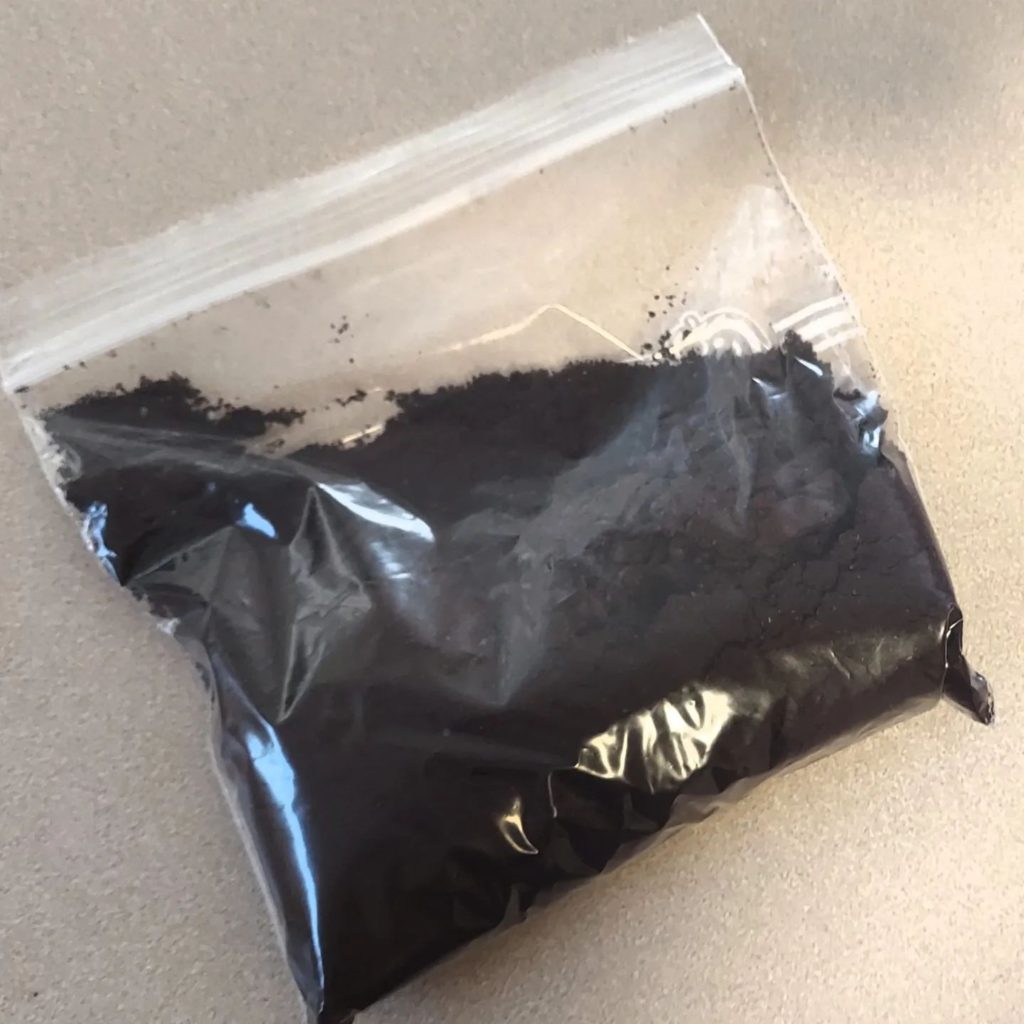
It came from beans collected at our friend John Lombardo’s 10-acre mountain home in Utuado, Puerto Rico. John then dried the beans in the sun, roasted them in a wok, ground them, and delivered them to us yesterday. I wish the Internet could deliver to you the incredible smell. I can’t wait to drink!
Brewed to perfection. Smells like heaven.

Add some leche (milk) and drink!
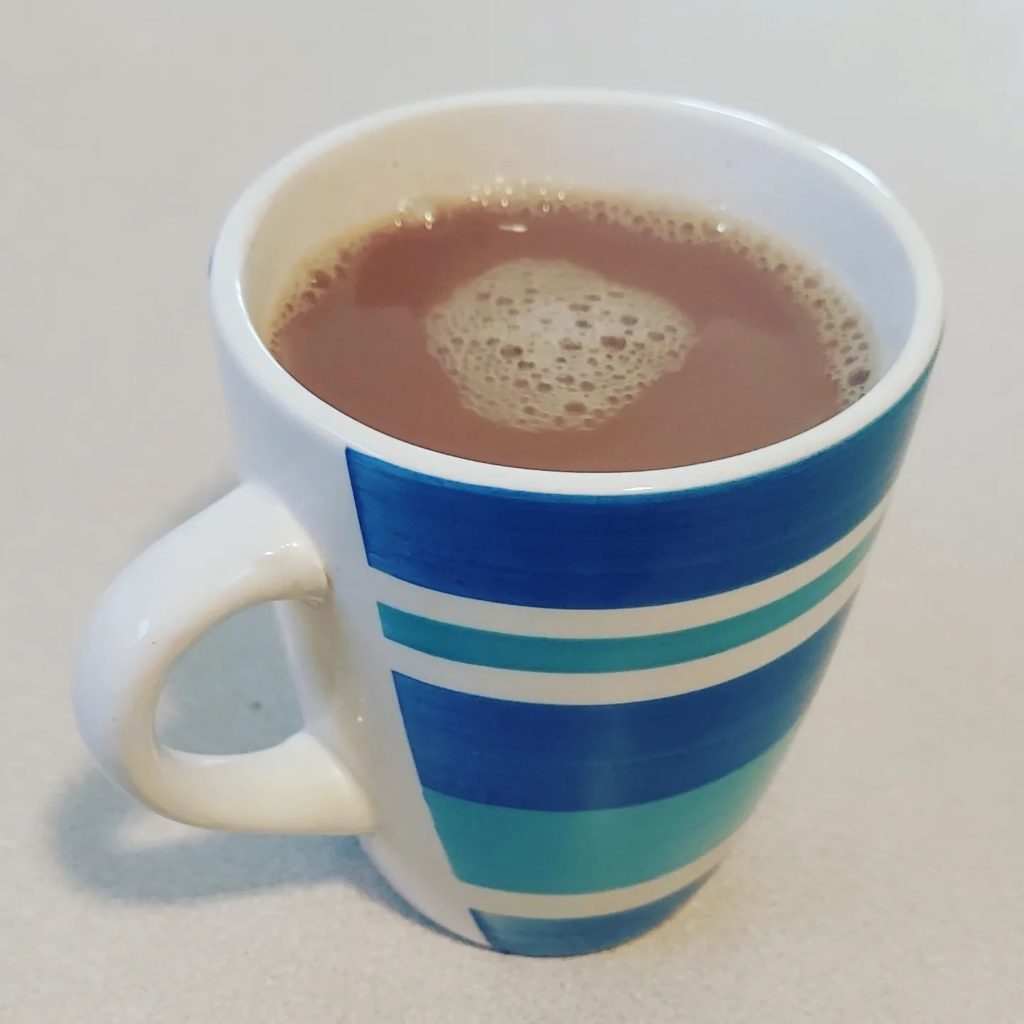
Delicious.
We got this reward because we picked coffee with John at his hacienda last fall. And we hope to do it again, many times!
We spent a morning flying across the rainforest canopy at JungleQui Zipline Park in El Yunque National Forest. I don’t know which was more spectacular – the adrenaline rush of the ziplines as we flew from tree to tree like Tarzan, the incredible views of the lush flora and the river far below, or the sparkling personalities of our tour guides.
There was a little bit of hiking involved, some on a steep trail, so if you do this, you need to be in reasonable physical condition. Make sure to wear good shoes. We wished we had realized we could carry water bottles, because it took 2 ½ hours long to navigate 11 ziplines and one exhilarating rappel. And it got hot!
We drove to Junglequi, but they also operate a service that will pick you up at your hotel, if you don’t rent a car or prefer not to drive.
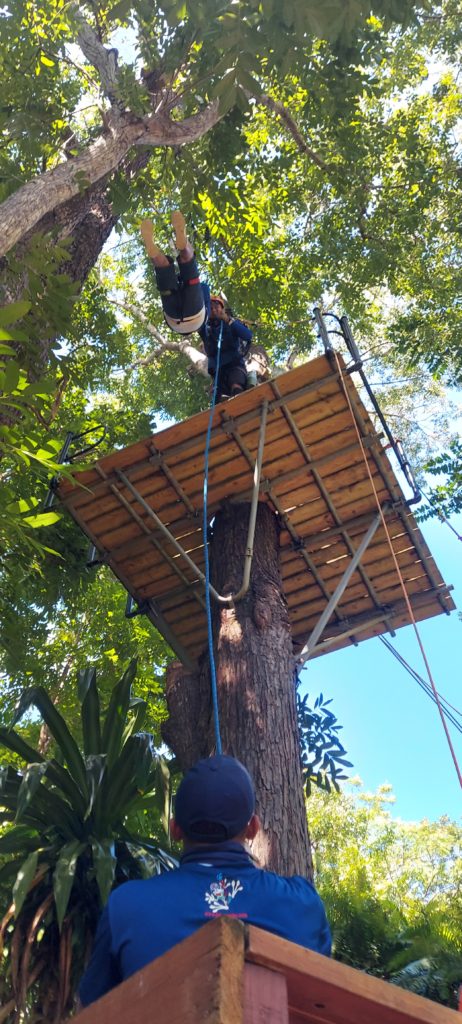
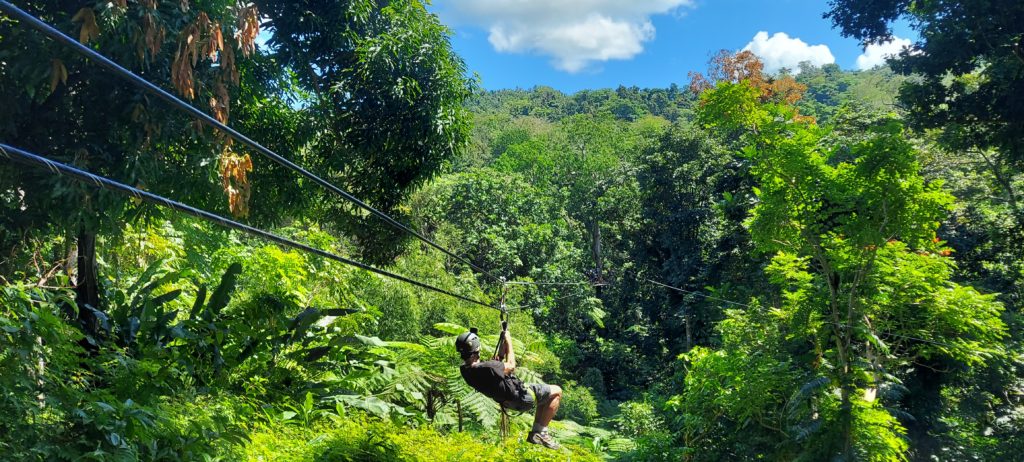

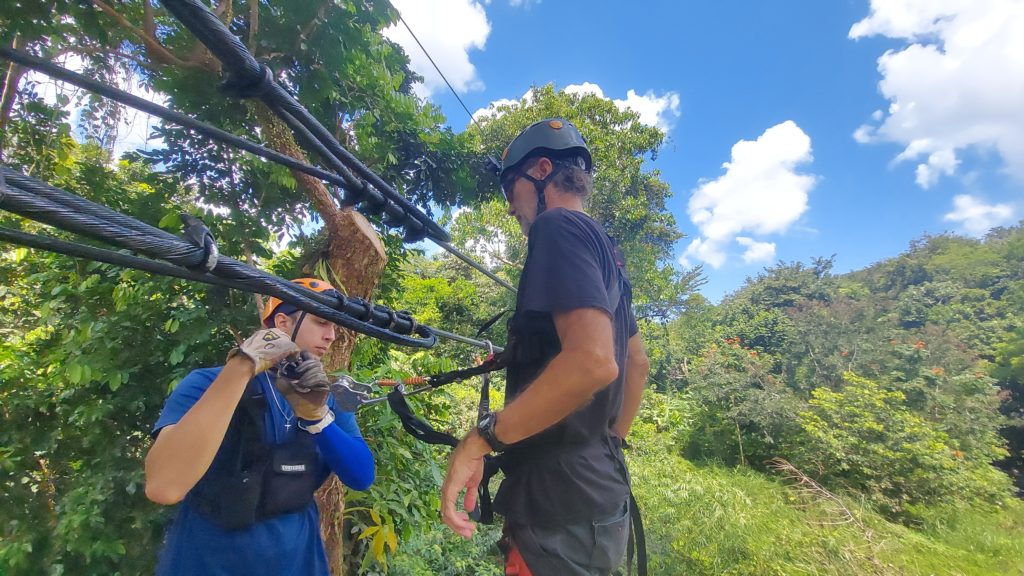
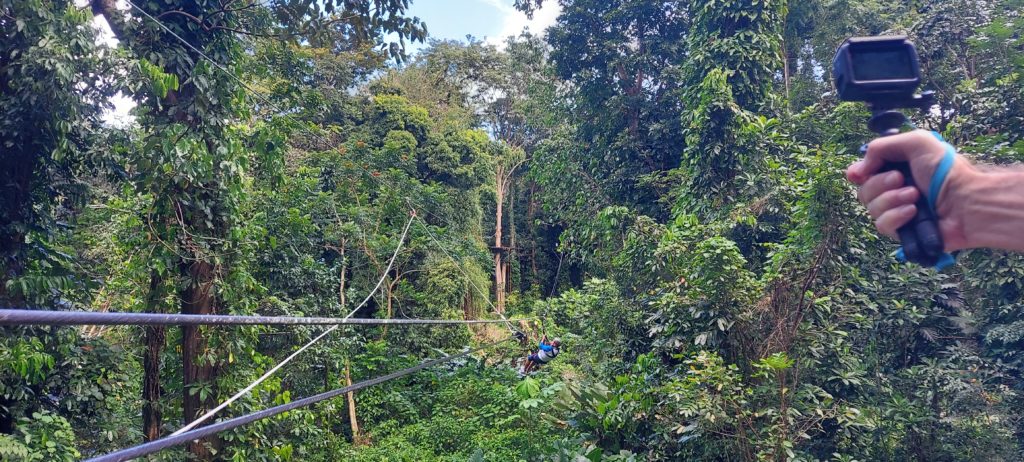
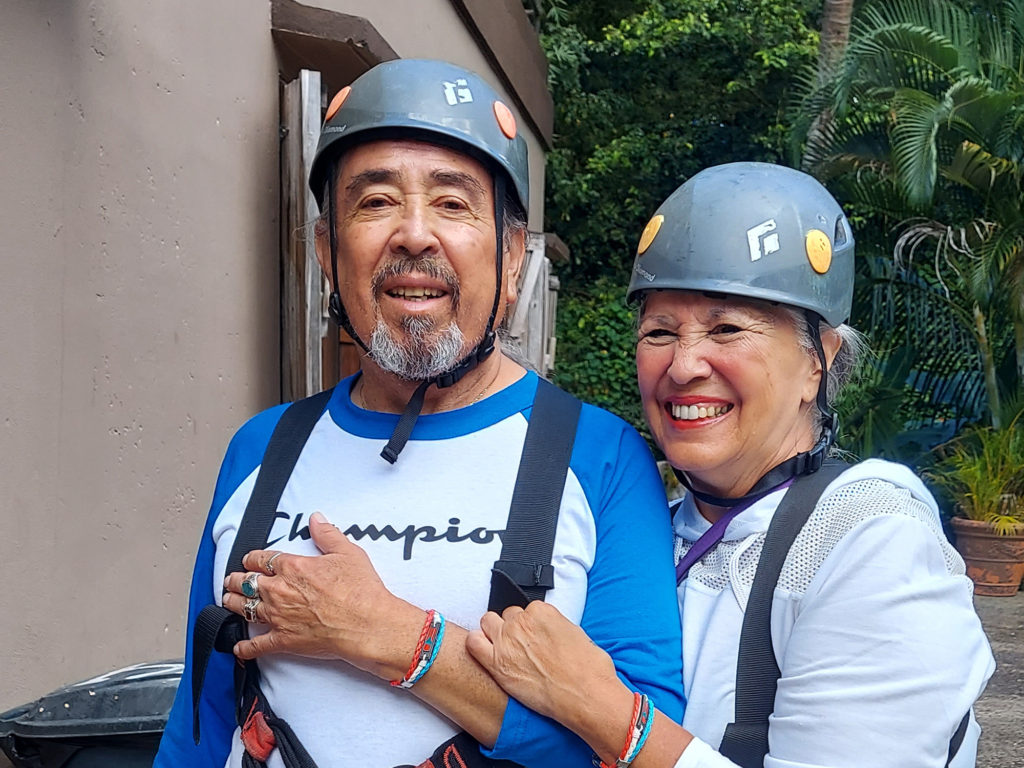
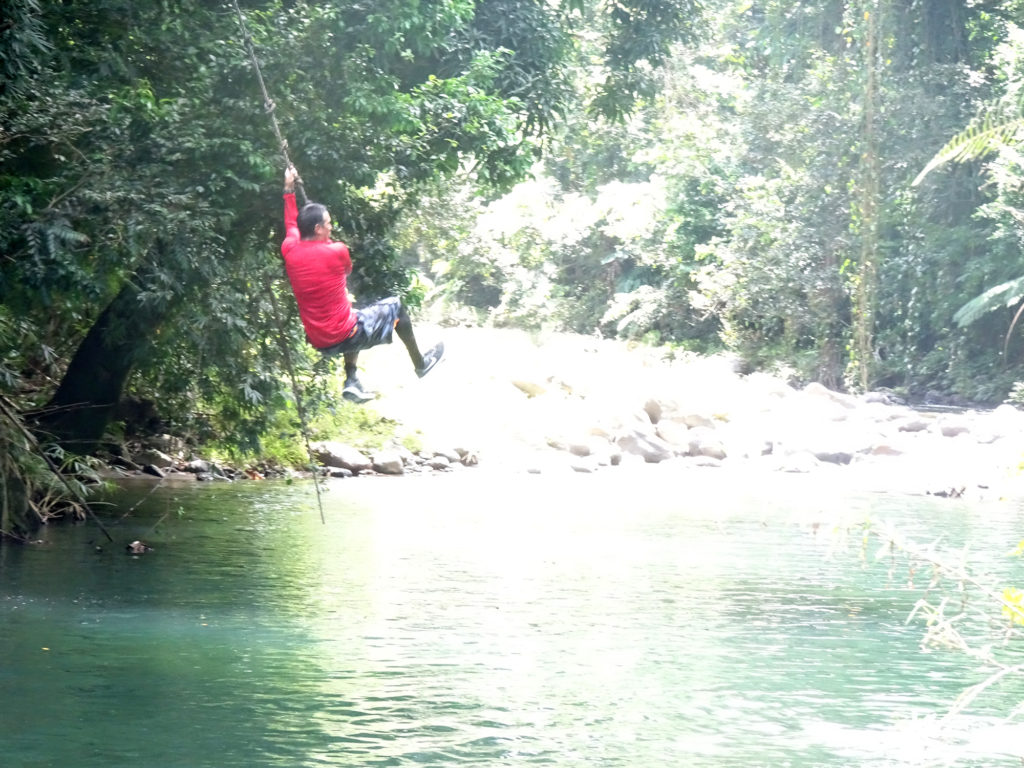
Across from the parking lot at the entrance of Junglequi, our local friend Julio, who operates Rosario Tours, took us down a trail to a locals spot by the river, where you can jump off a rock into the water or even swing out on a rope! If you’re ever looking for a personalized tour of any part of Puerto Rico from someone who has a true passion for discovery and a contagious joy, Julio Flores is your man!
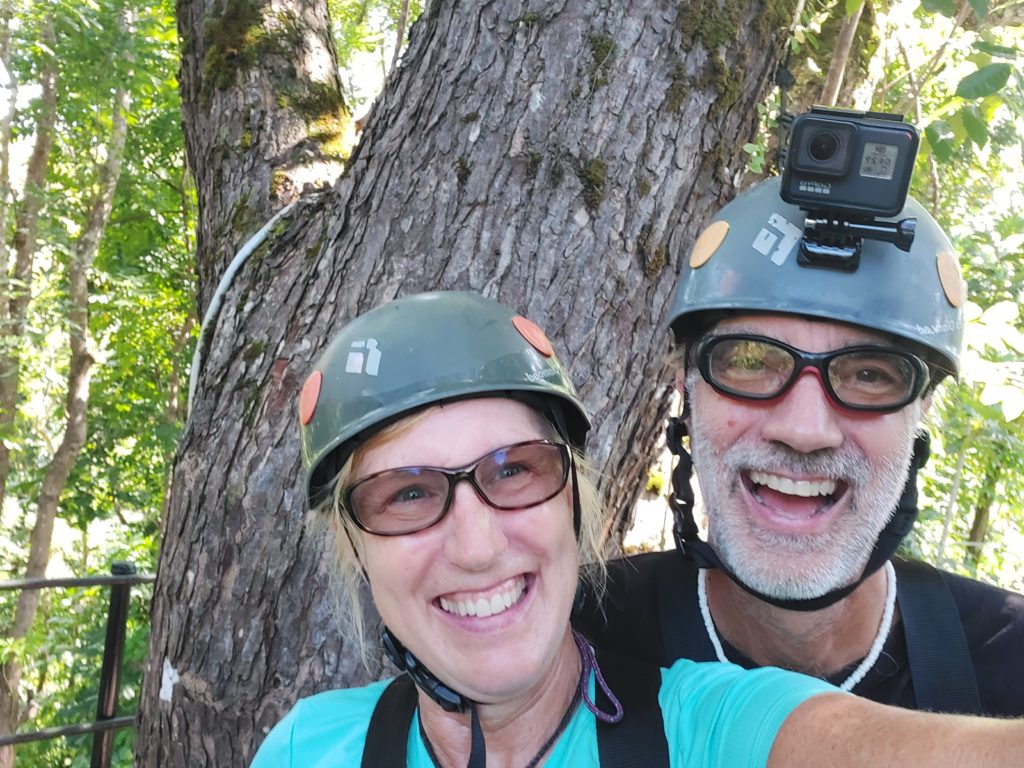
We travel with a very sweet cat, Kaylee. She’s a petite Maine Coon, very affectionate but also very nervous.
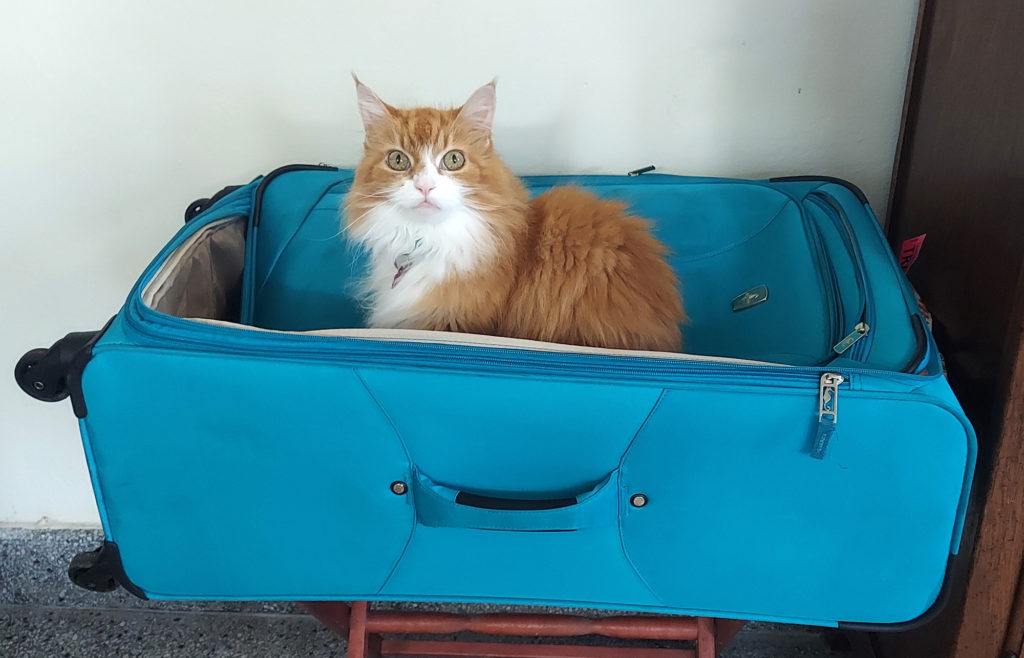
She technically belongs to our oldest child, Aryk, but as Aryk is still finishing grad school in England, Kaylee travels with us.
And she doesn’t like it.
It’s not easy for us, either. But we wouldn’t have it any other way.
Flying with a cat companion is a logistical challenge. Here are the many steps:
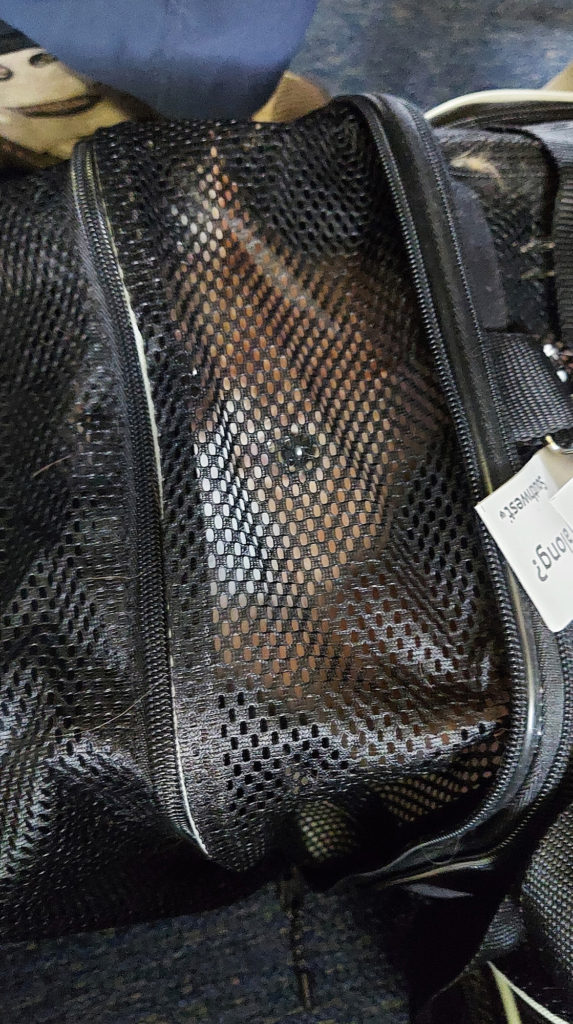
In addition, to bring Kaylee to Puerto Rico, we had to get an international health certificate, which entailed finding a specific kind of vet and paying $240 for the paperwork, an extra exam, and extra shots. And then the authorities in PR didn’t even ask to see any of it! We have done this twice. I spoke to a dog owner here who did it for three dogs, at much greater expense because of their large size, and no one asked to see their paperwork, either. I know if we skip this step, though, the authorities will ask for it and send her back to the States.
Kaylee can always tell when we are about to move. When our suitcases come out, she starts looking for hiding places — and we start looking for ways to keep her out of those hiding places. We once had to practically disassemble a bed in a motel when she climbed up inside the box frame.
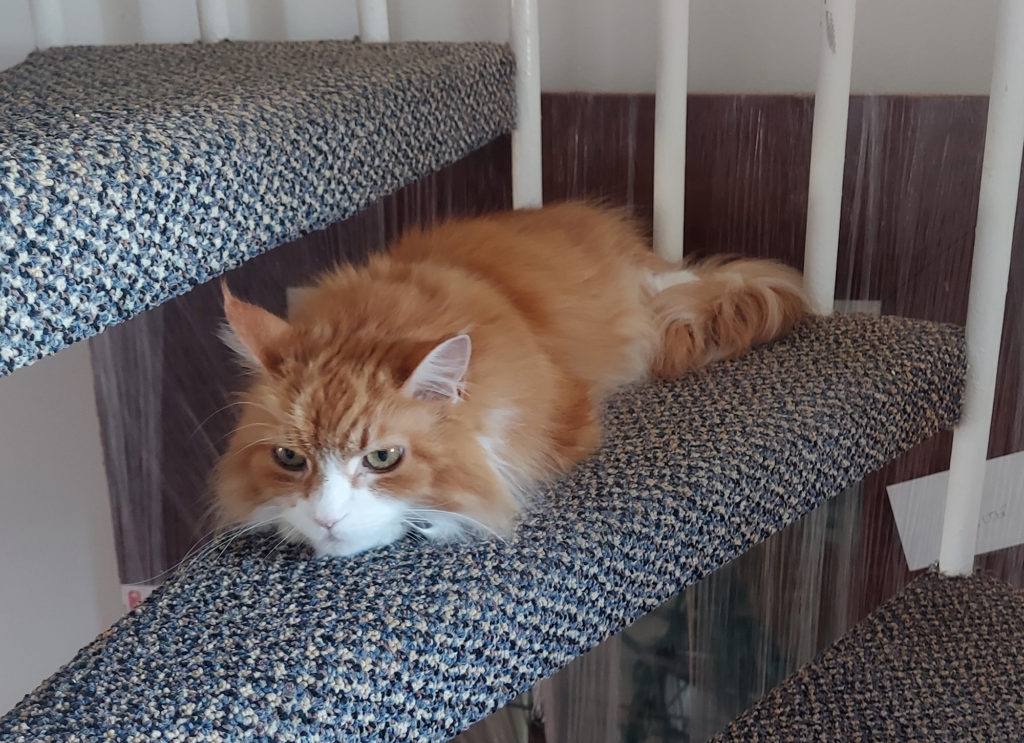
Alleviating Kaylee’s anxiety about flying is crucial, so we got gabapentin, an anti-anxiety medicine, from the vet, which has helped Kaylee endure the terrifying airport screenings and long periods stuck in the carrier. Usually. It does wear out, though. You can tell because she starts thrashing and meowing. A friend who operates a doggie daycare suggested I play a calming playlist from Amazon music. This works miracles! I just place the phone on her carrier to act as her private concert hall, and she is calmed instantly. Thank you, Cesca Ferrante Segalas!
Cats like routine, and life is always changing when you travel. We manage Kaylee’s stress as best we can, but there’s a limit to what we can do. Sometimes local cats meow outside the windows at night, or come up to the door during the day. Humans shove her into carriers with no warning, and sometimes leave her there for hours while we travel in cars or planes. Food on the road is inconsistent, depending on what’s available where we are loving at the time. The environment changes monthly, when we move to a new condo. (This is part of the reason we bought the house in Cabo Rojo.)
Kaylee’s buddy Ellie, our Russian Blue who lives at college with Gavin, may be in the house for months (over summer break), and then, just when they have finally adjusted to each other (again), will abruptly disappear with no explanation.
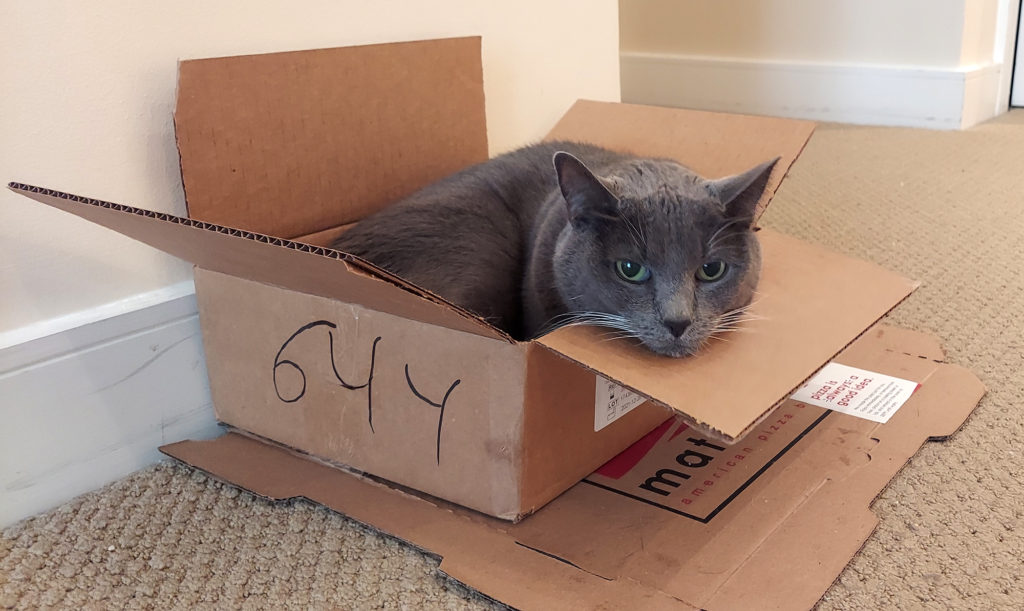
Once, while living in Mexico City, we put Kaylee in boarding while we took a short jaunt to Acapulco. We had to return early due to COVID, but the vet was calling anyway, saying our kitty was freaked out by another cat who wouldn’t stop yowling. We arrived to find her hiding in the kitty playroom, her body tucked deeply into the bottom tire in a stack.
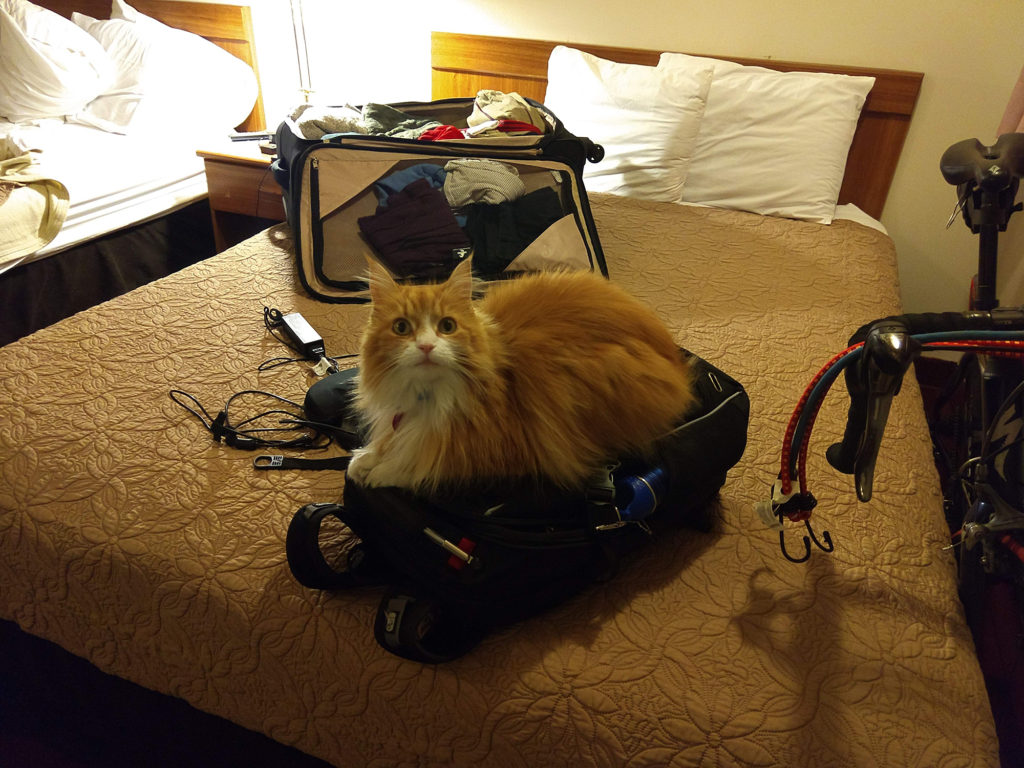
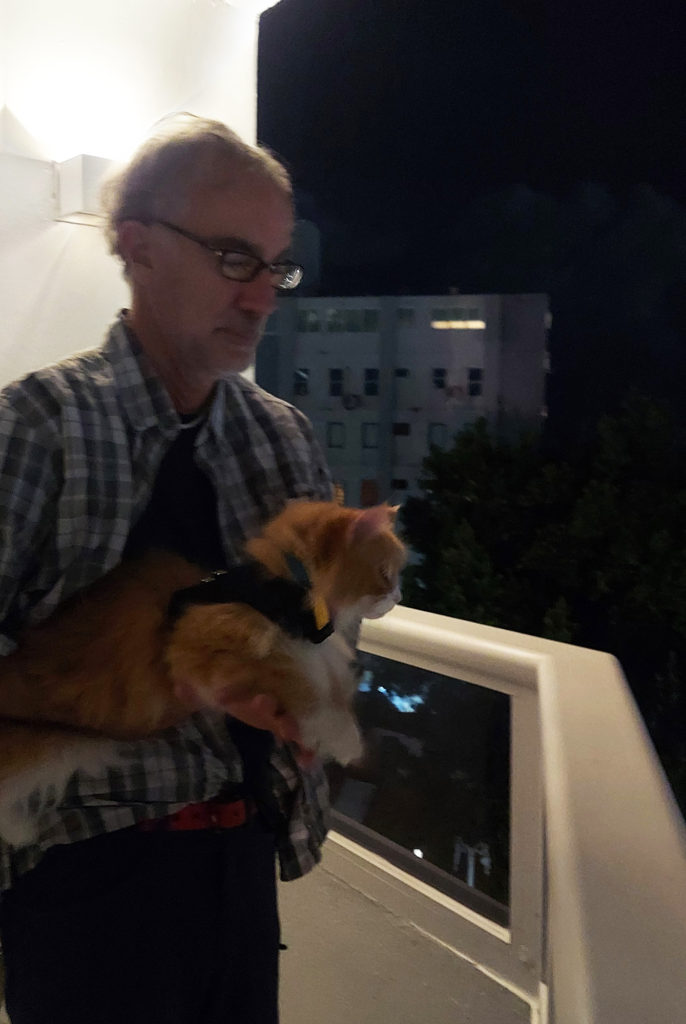
Kaylee was recently diagnosed with alopecia, after she licked all the hair off one of her furry legs. The vet said this could be caused by fleas – and told us all cats in PR should be regularly treated for fleas and heartworm – by food allergies, or by stress. We are treating her for fleas, and we’ll test for food allergies this summer if her symptoms persist. But in all likelihood, it’s anxiety. So, we make her life as easy as possible, give her tons of attention, staying home some days just to provide a lap for her to nap in, and keeping up her routines as much as we can (within limits).
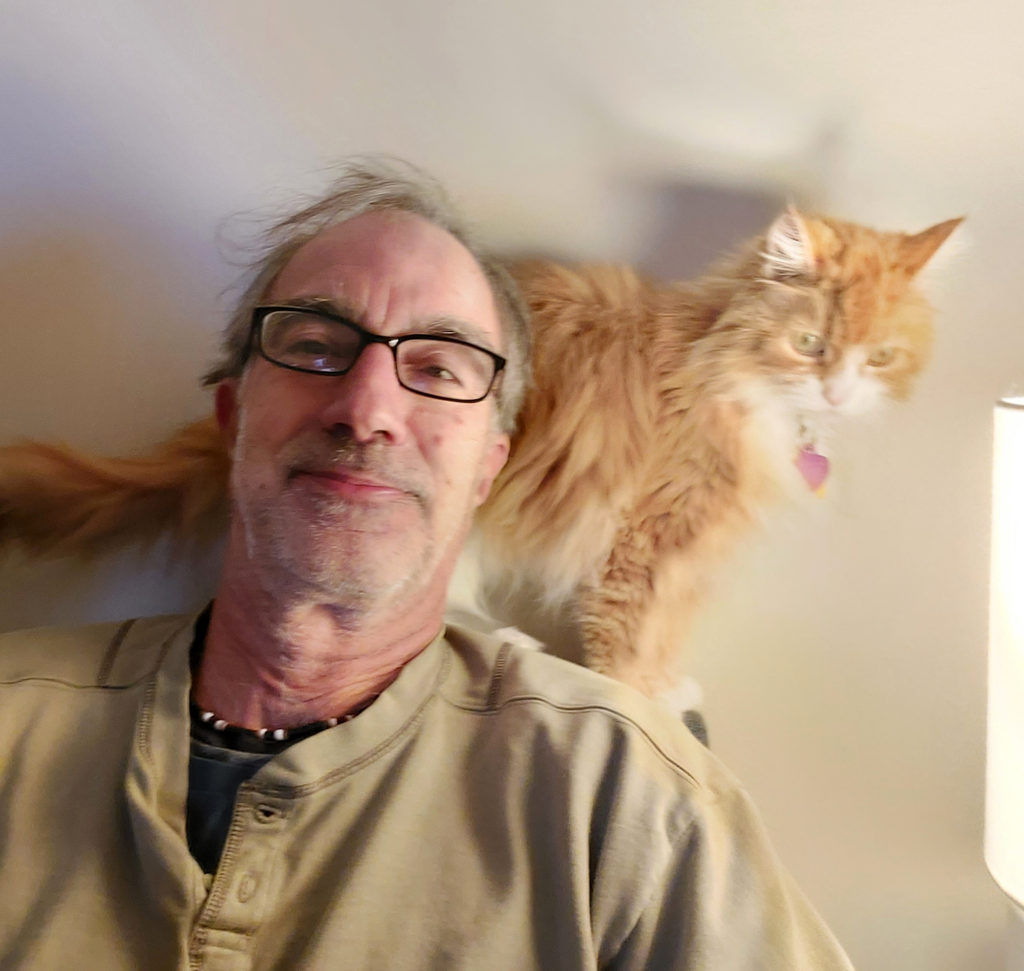
Finding vets to care for cats in a place where you don’t speak the language well is a constant challenge. Their front claws must be trimmed regularly, they must be treated to prevent fleas and heartworm, and sometimes they get sick. The upside is that it’s usually less expensive anywhere else than in the States.
Our cat Equinox took ill a week into our Mexico City stay in early 2020. We found a vet within walking distance whose convenient office we had noted while exploring the city, and rushed him there. Fortunately, one vet spoke English, and he got the city’s best kitty cardiologist involved when it turned out our cat had hypertrophic cardiomyopathy. In humans, this condition is called “the widow maker” because often it’s often undetected until the patient, usually a man, has a sudden fatal heart attack. Alas, the same was true for our dear Noxy. He was hospitalized but only lived through a weekend, and had to be put to sleep in the middle of the night when he became agitated and had trouble breathing.
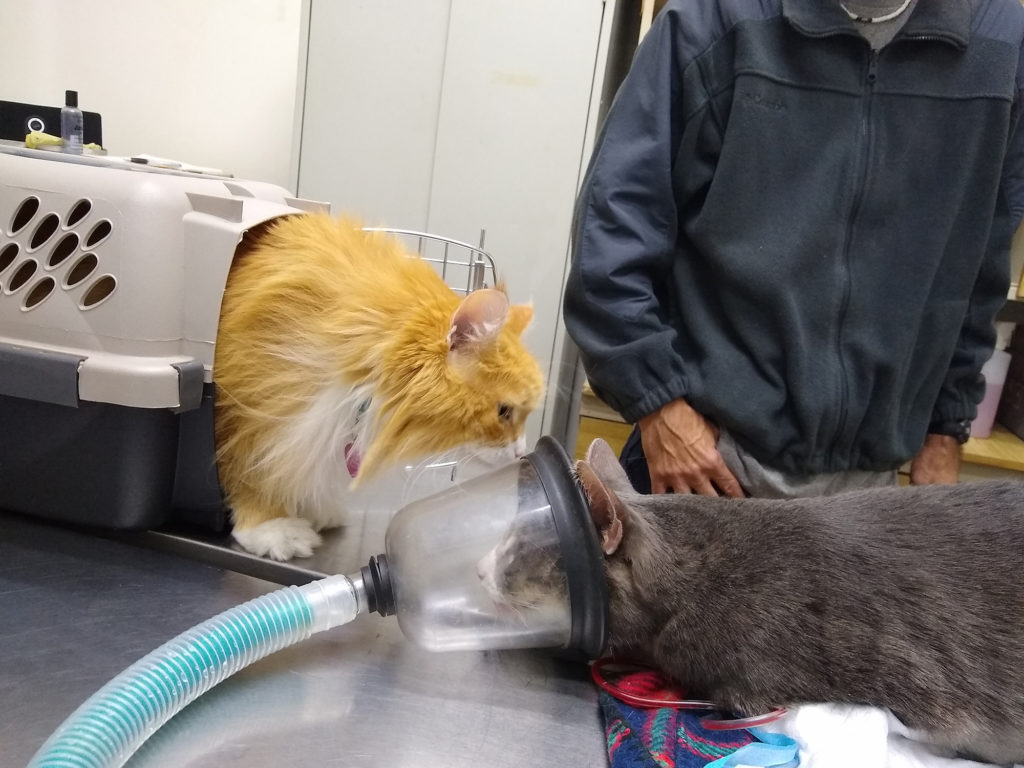
But he got excellent care. We were called in, we brought Kaylee to say goodbye to her friend, the children were called, and it was as good a pt death experience as is possible, And the cost for that care and his subsequent cremation was a fraction of the cost for the same in the States.
However, the stress of traveling and then moving to a mile-high city probably contributed to his demise, and this is why I am vigilant about managing Kaylee’s stress. The vet gave us this resource for helping keep kitty stress down: https://indoorpet.osu.edu/cats/feline-life-stressors
I hope the move to Cabo Rojo in winters will give her a more settled life. Alternating between two households should be much easier than adjusting to a new home every month! And when she finally moves in with her owner, our oldest child Aryk, we will probably stick to healing aid organizations care for all the stray cats in Puerto Rico.
Meanwhile, whenever I sit down to use the computer, read a book, or watch TV, I lay Kaylee’s favorite towel across my lap and call her name. She is here in an instant, ready to cuddle while I work. In fact, she is in my lap right now!
Because despite all the stress, the most important thing I can do for my traveling cat is to give her love.